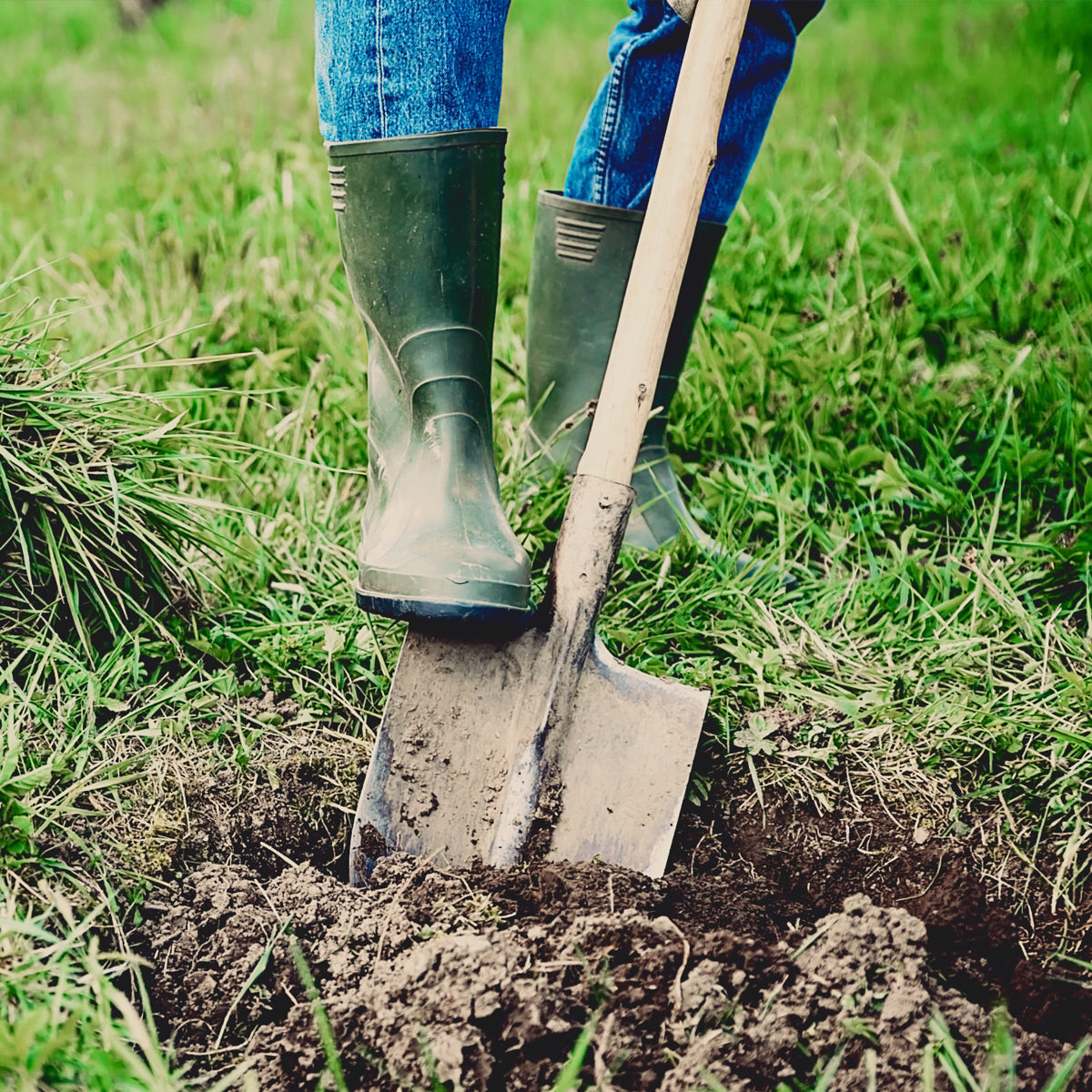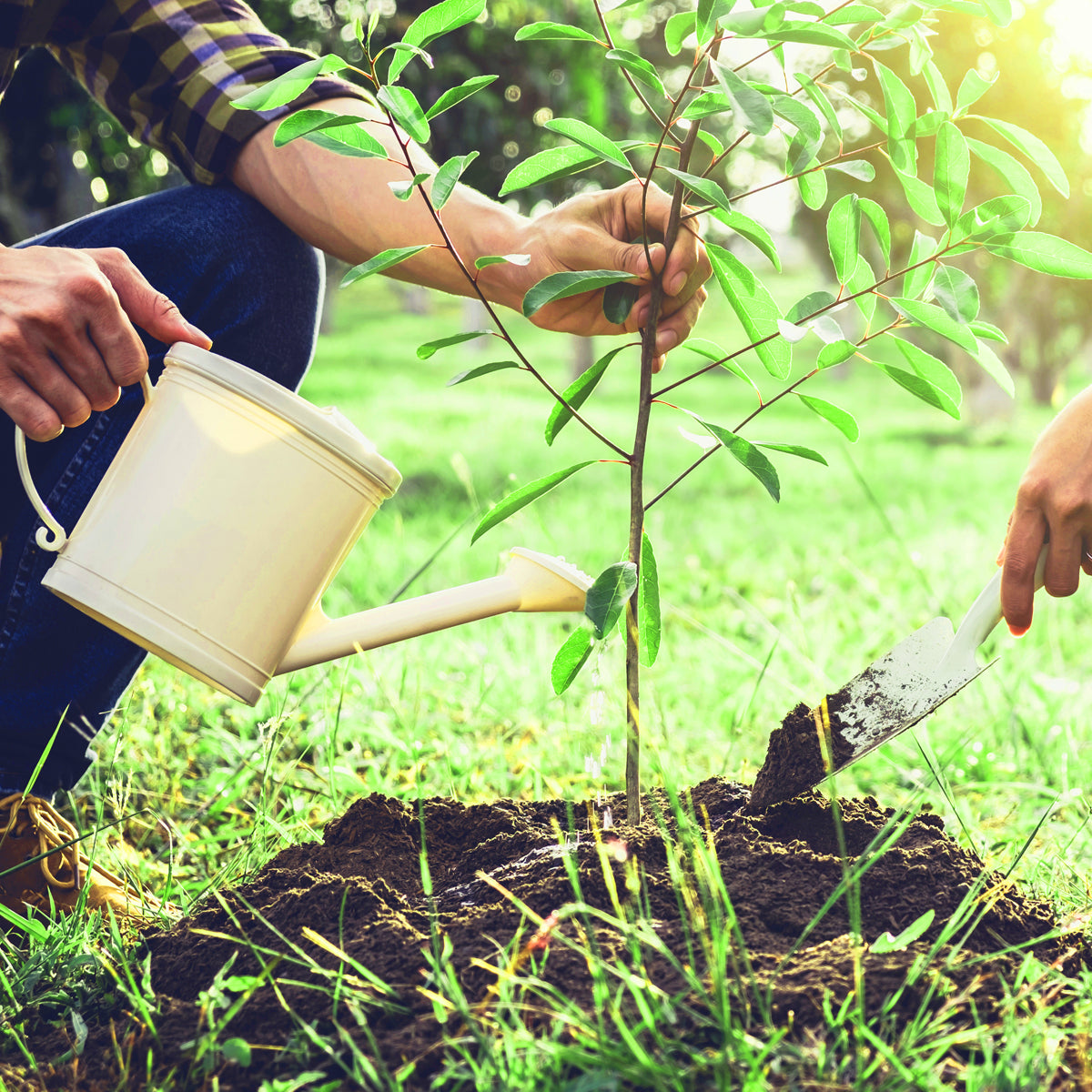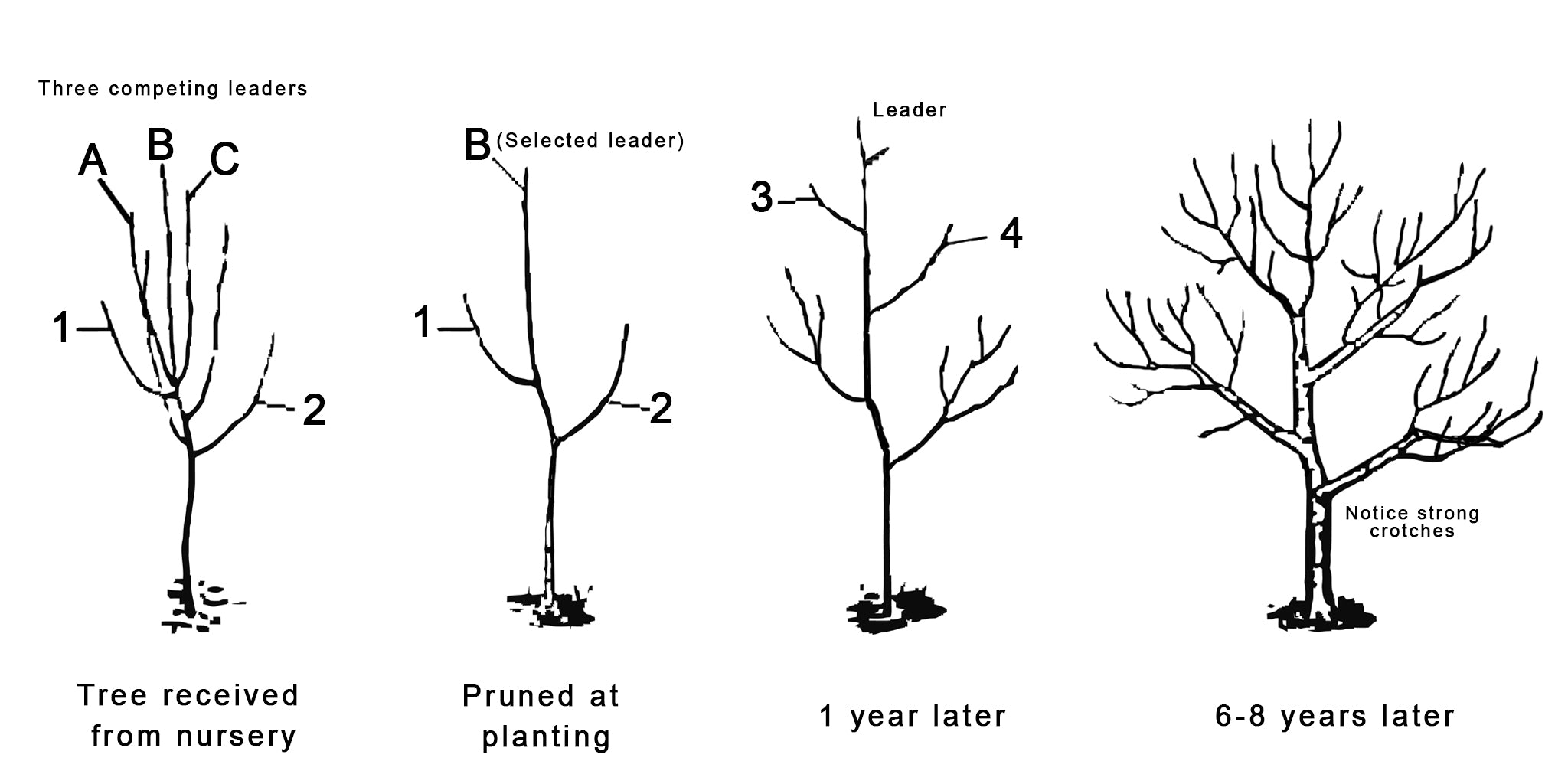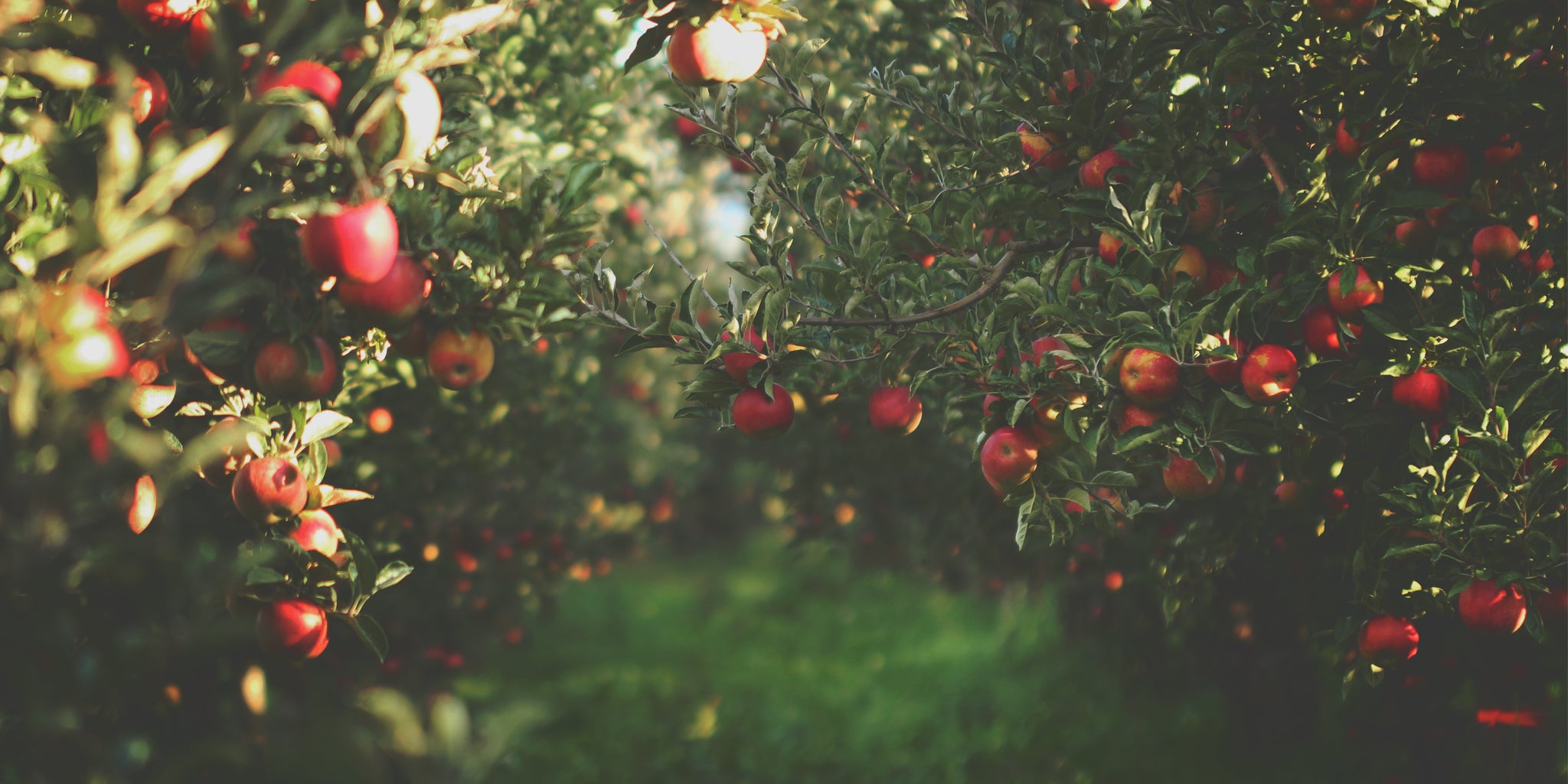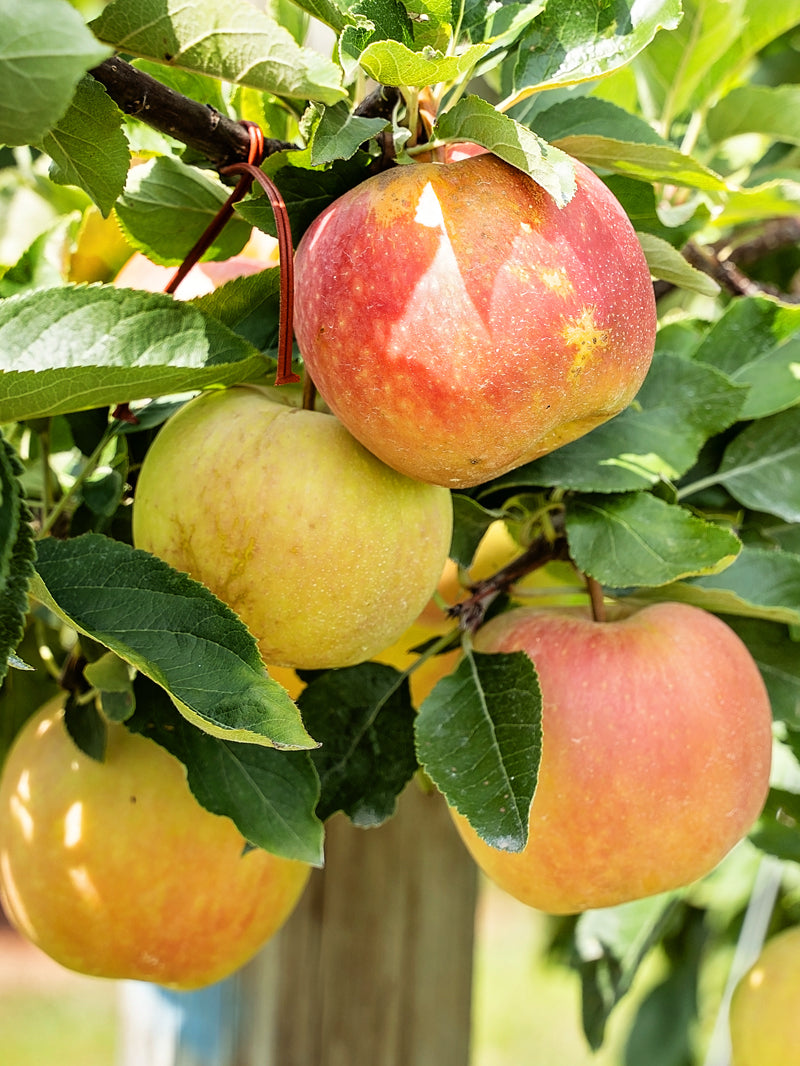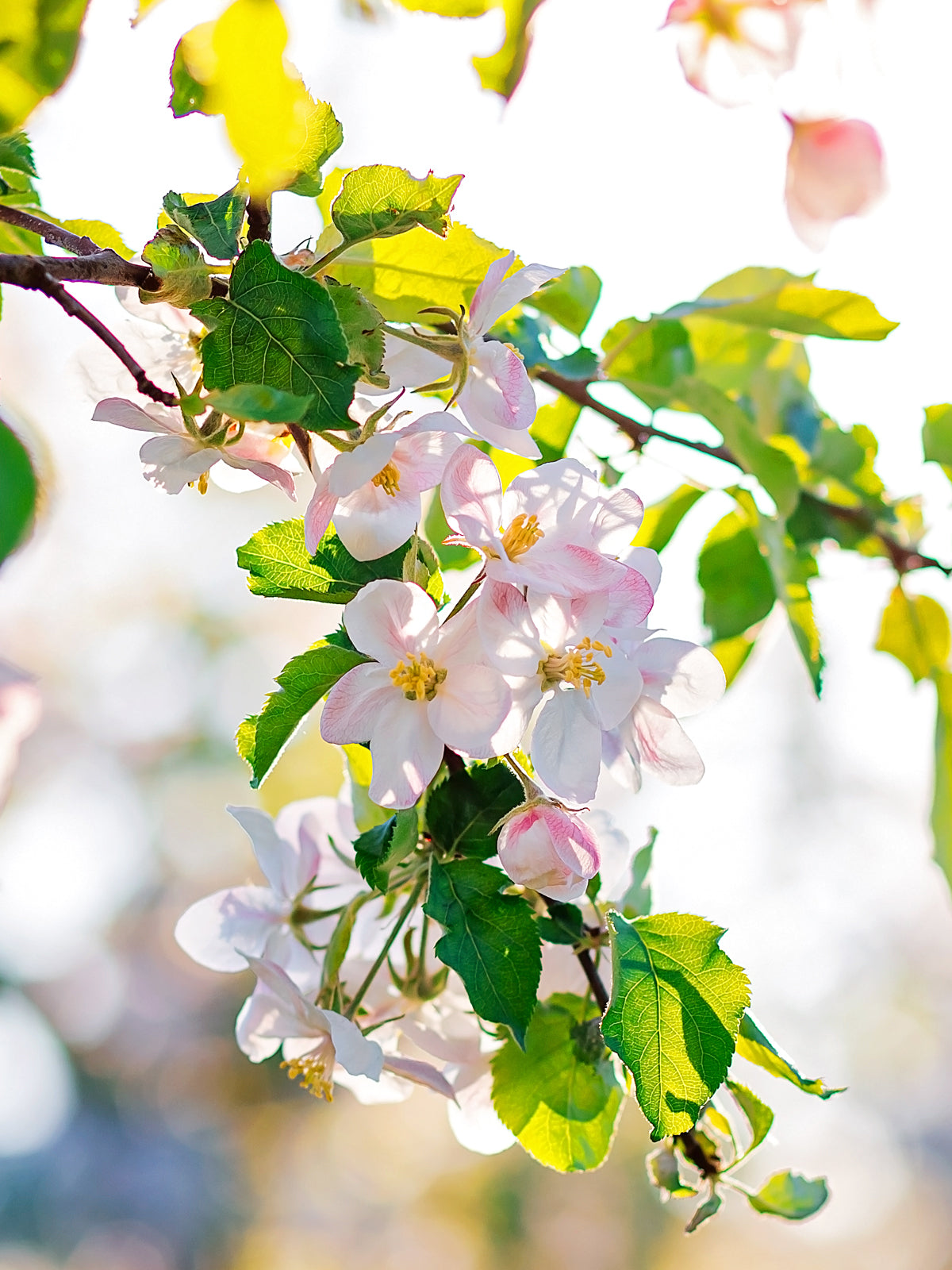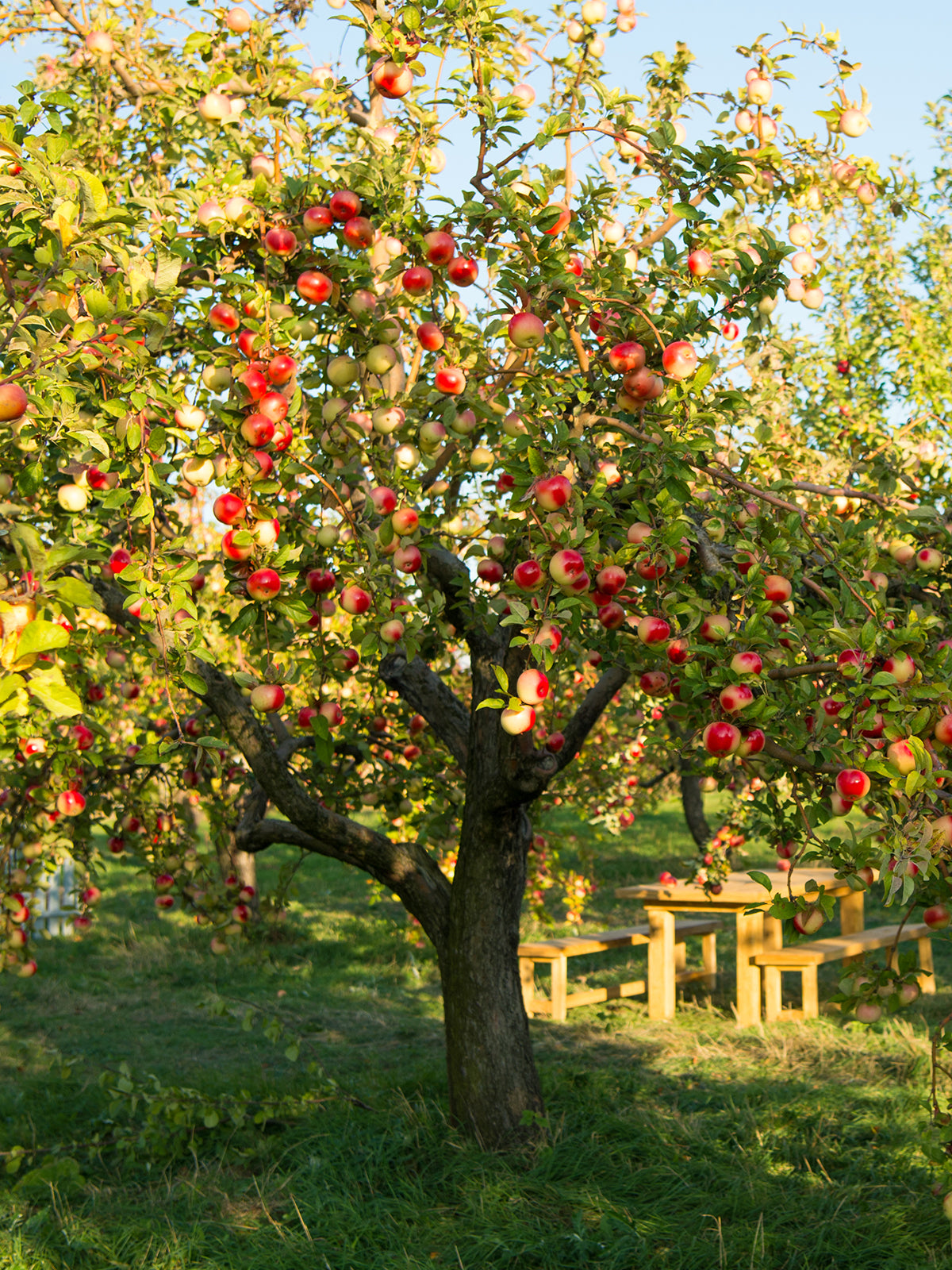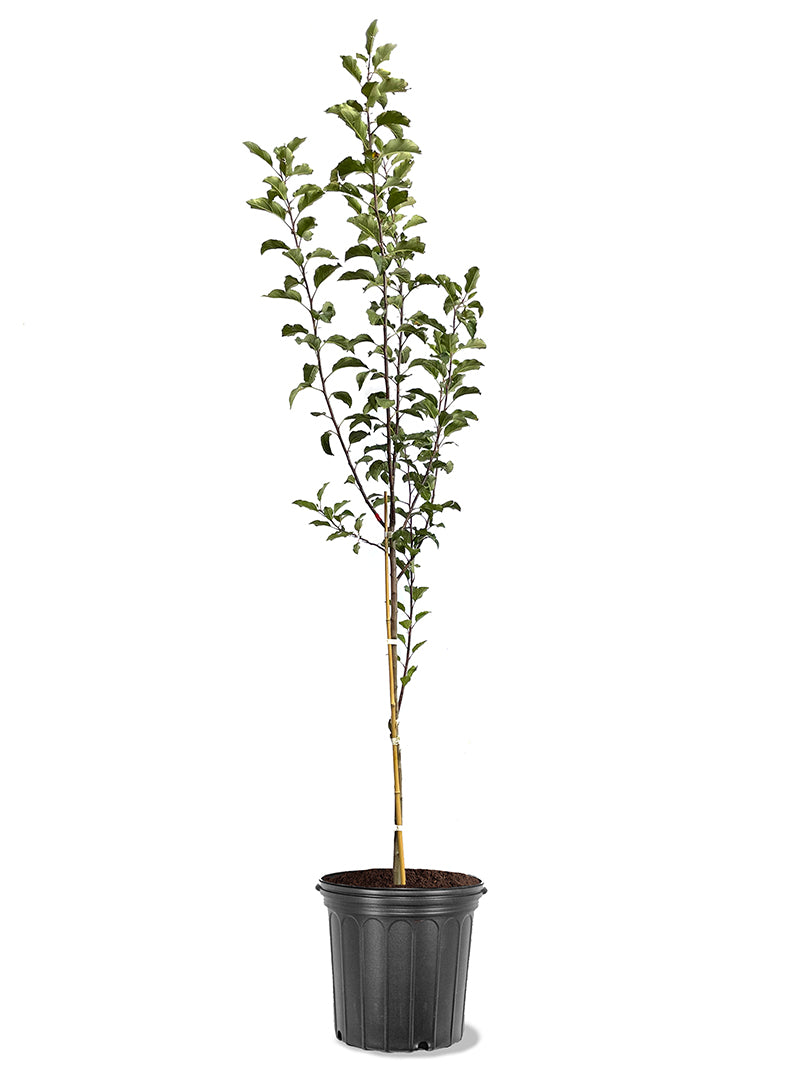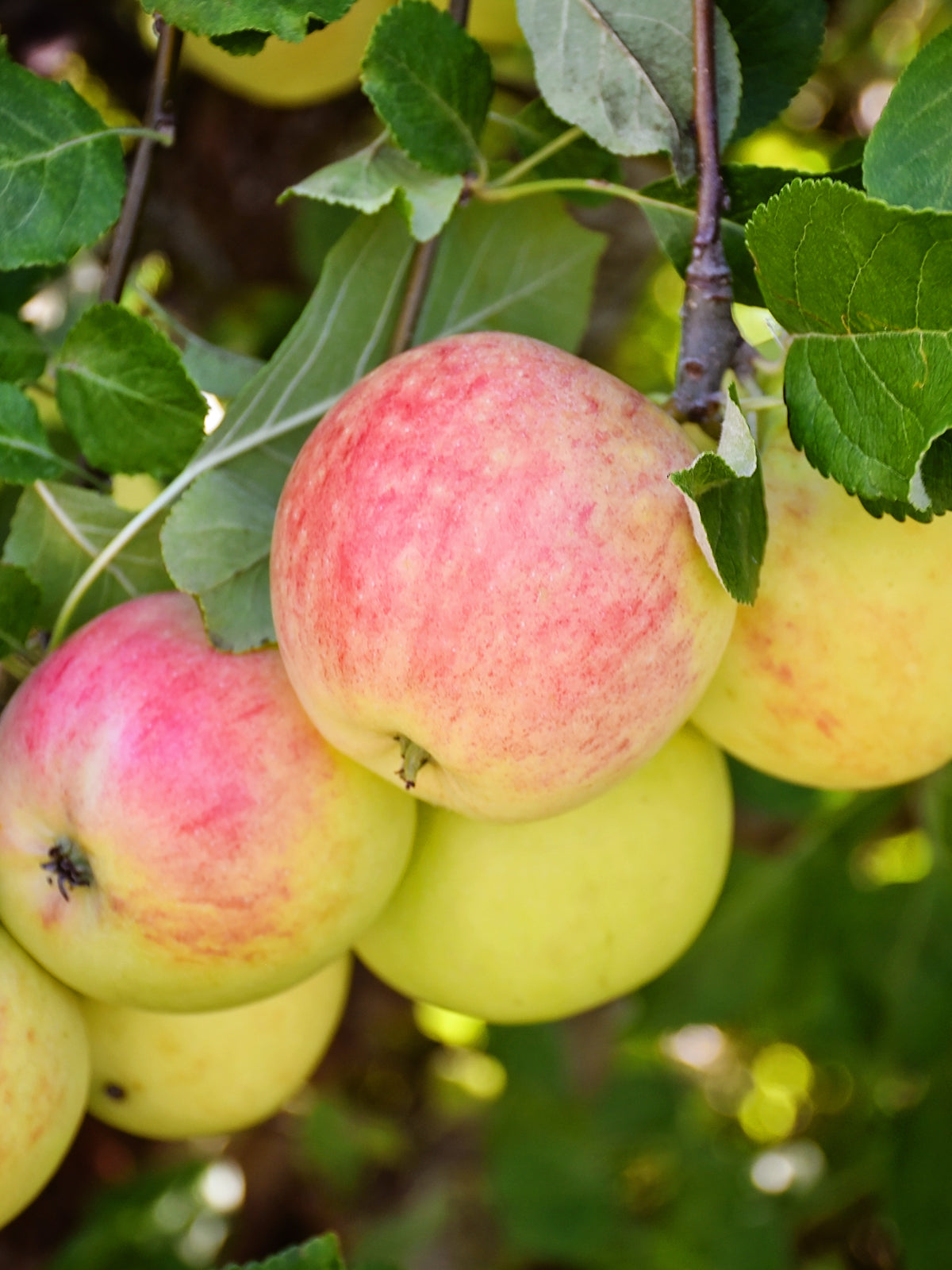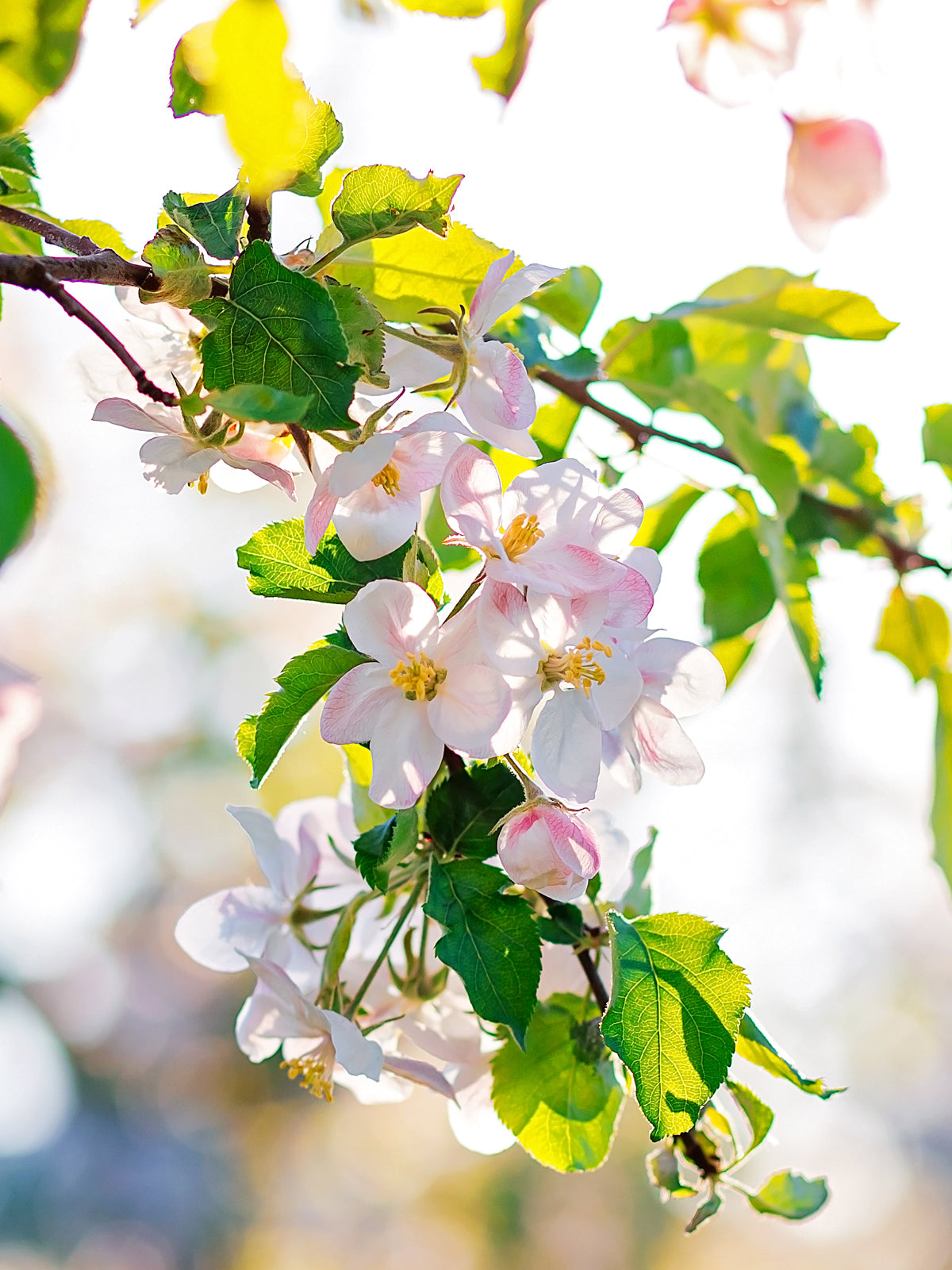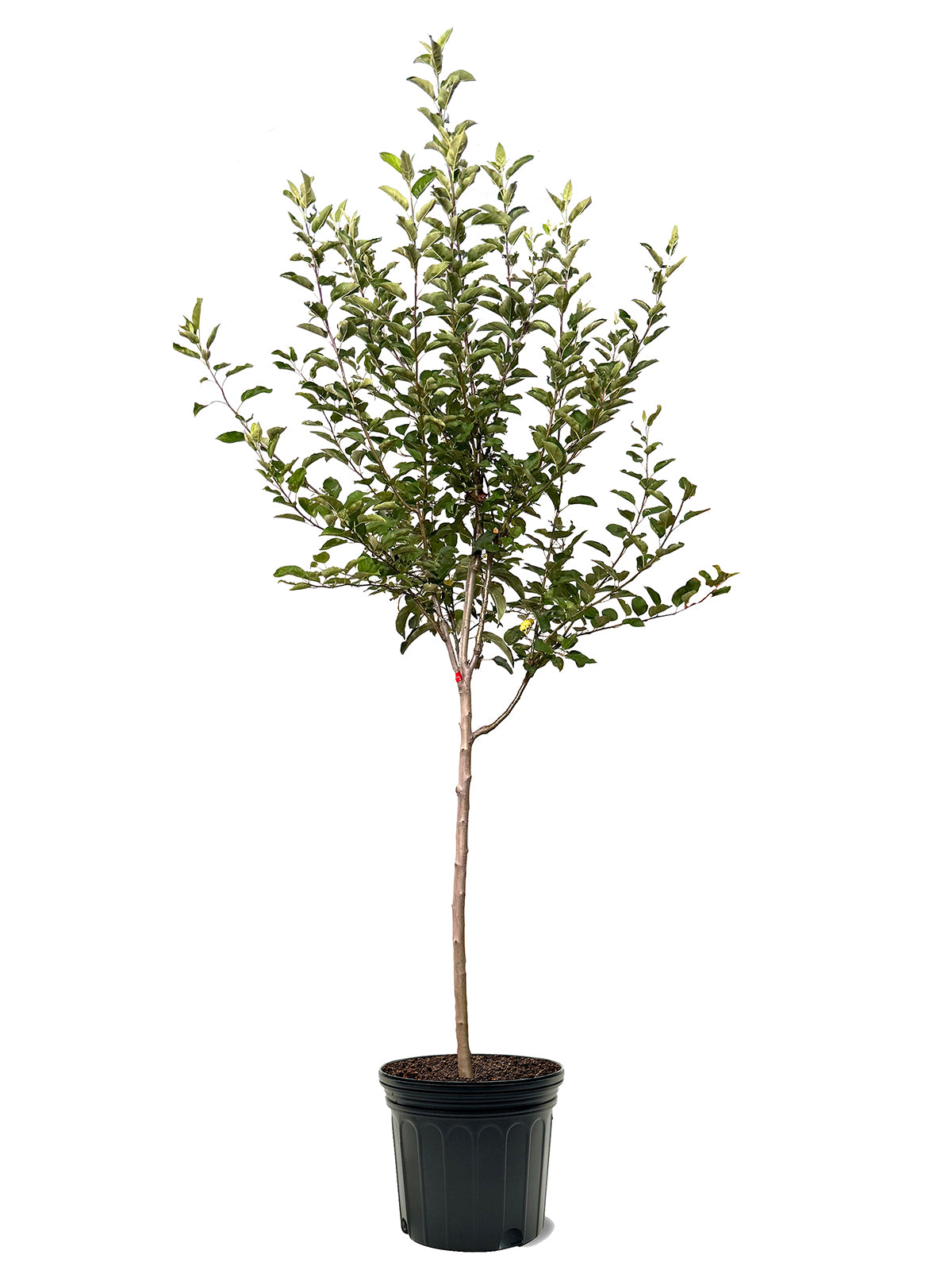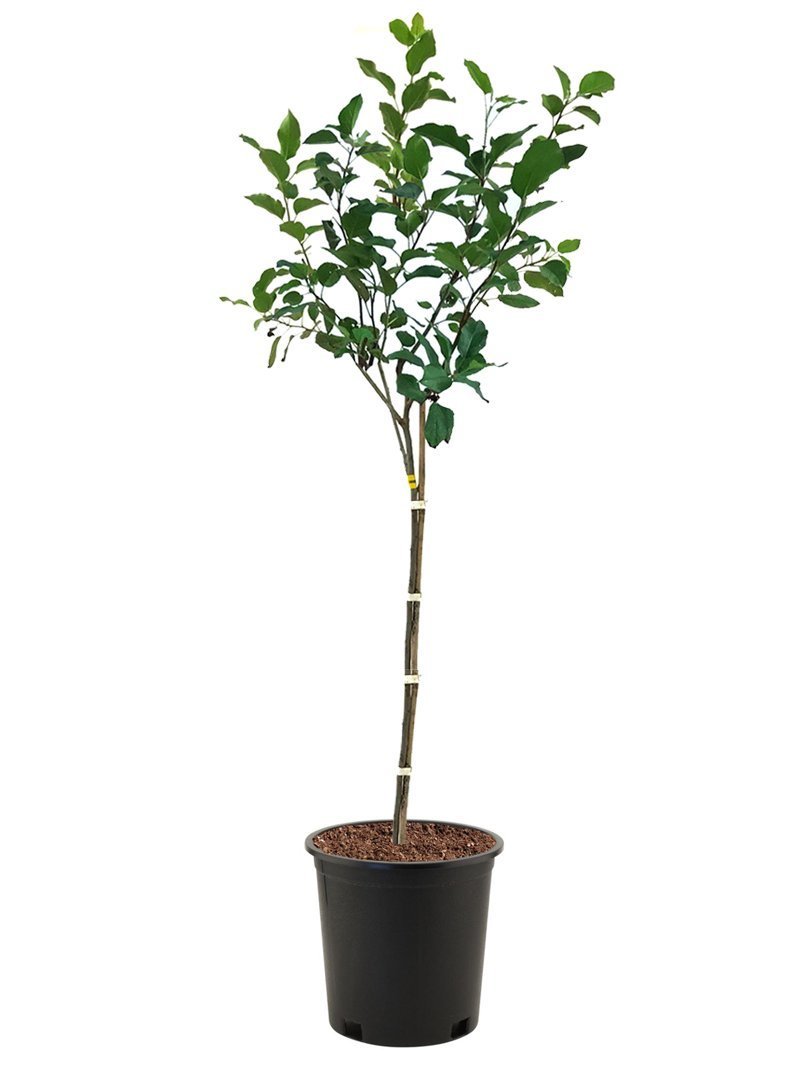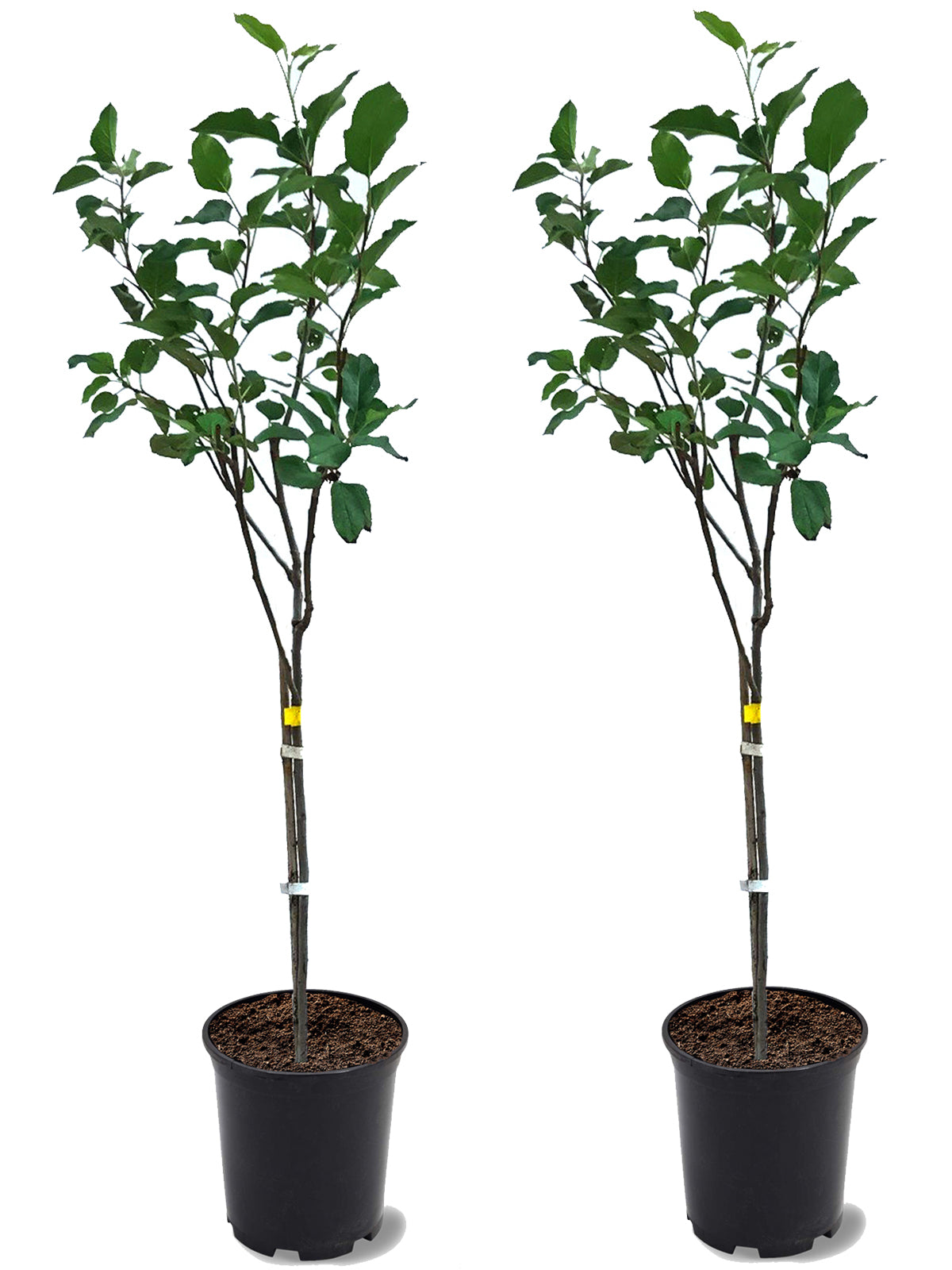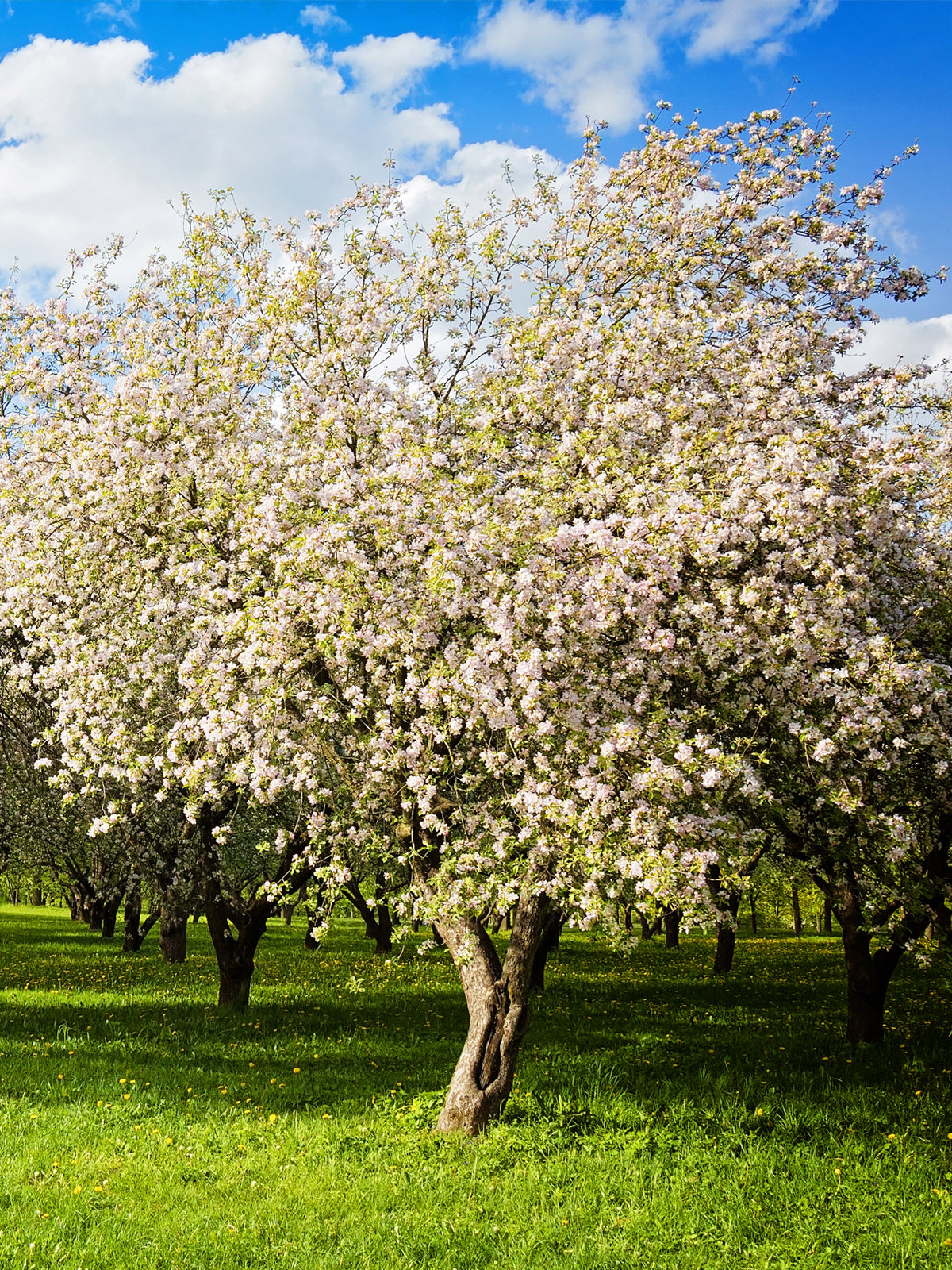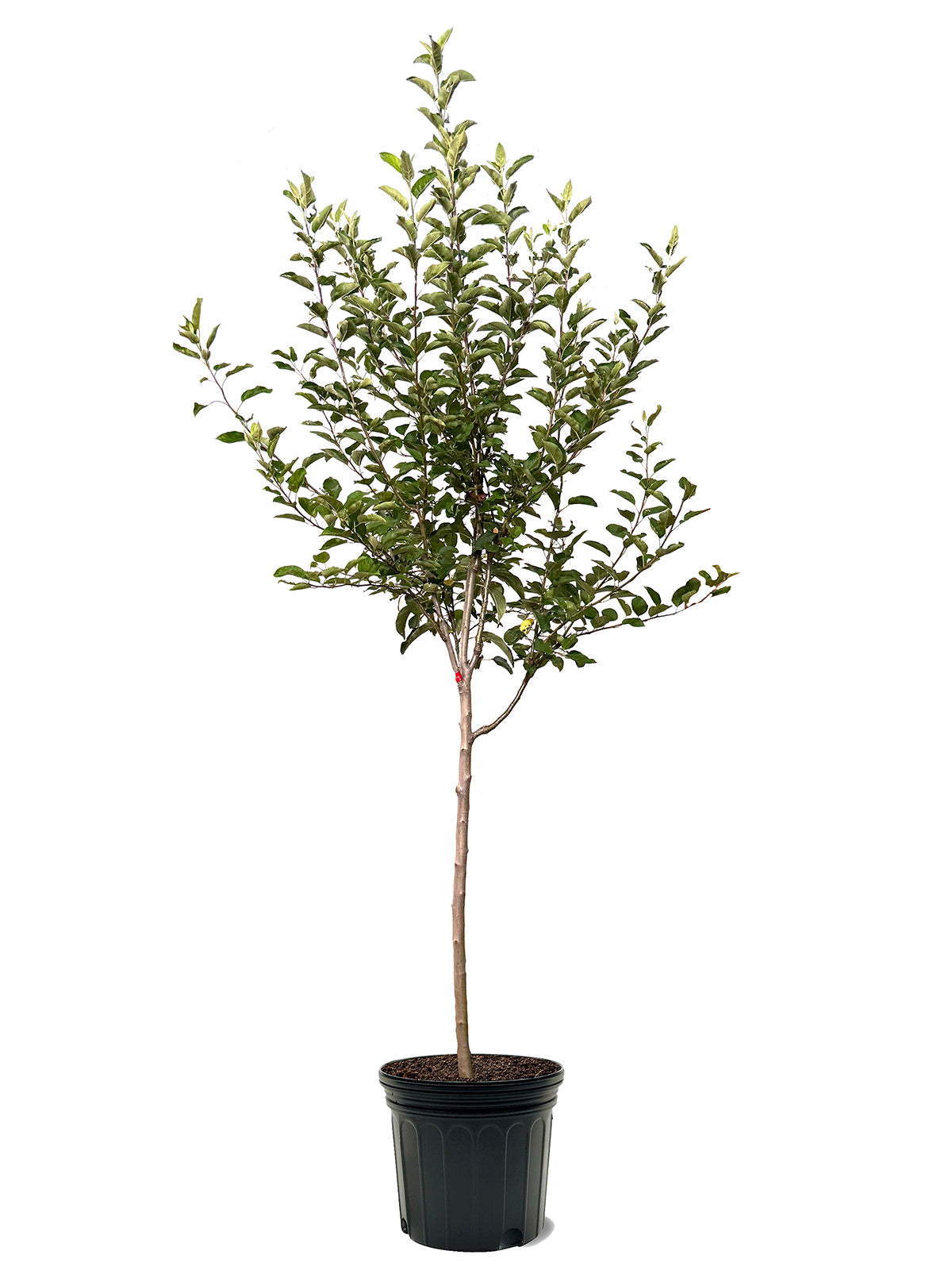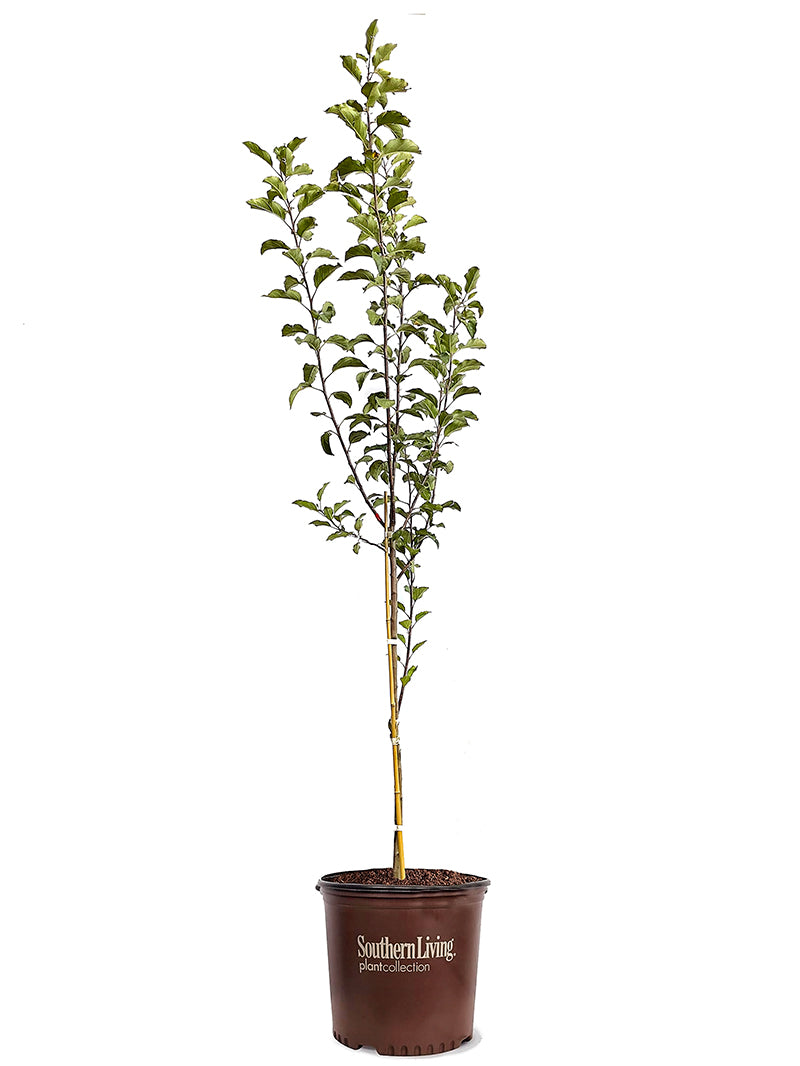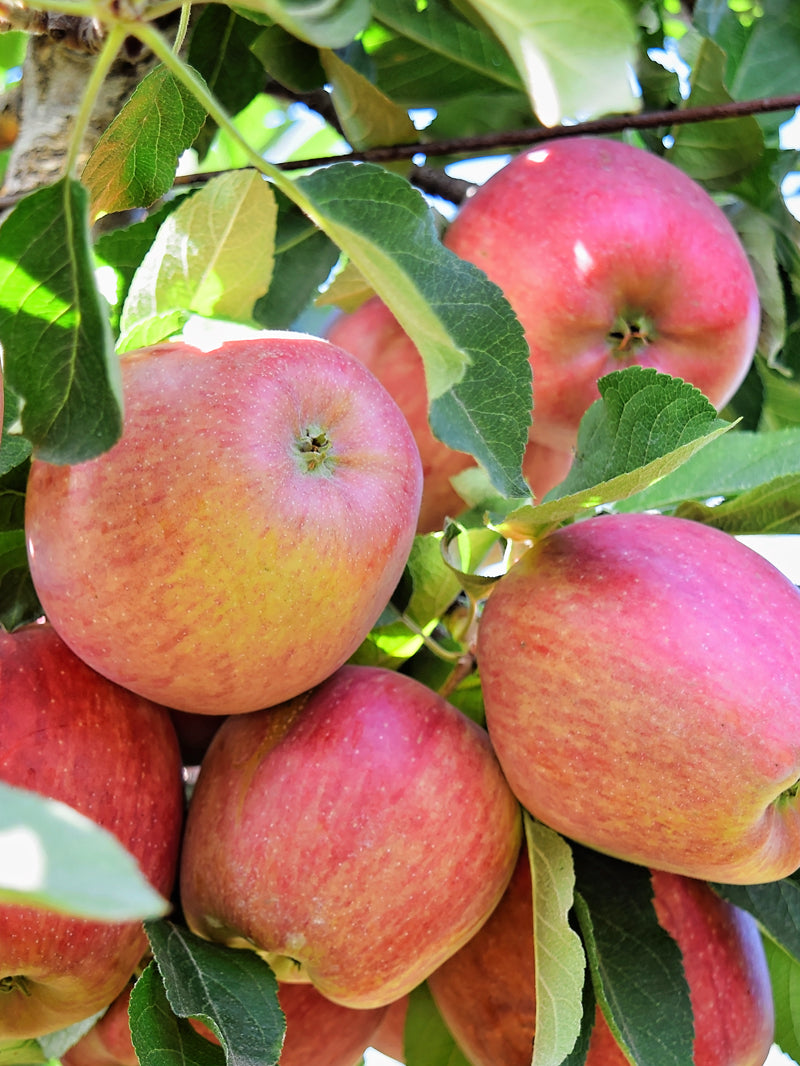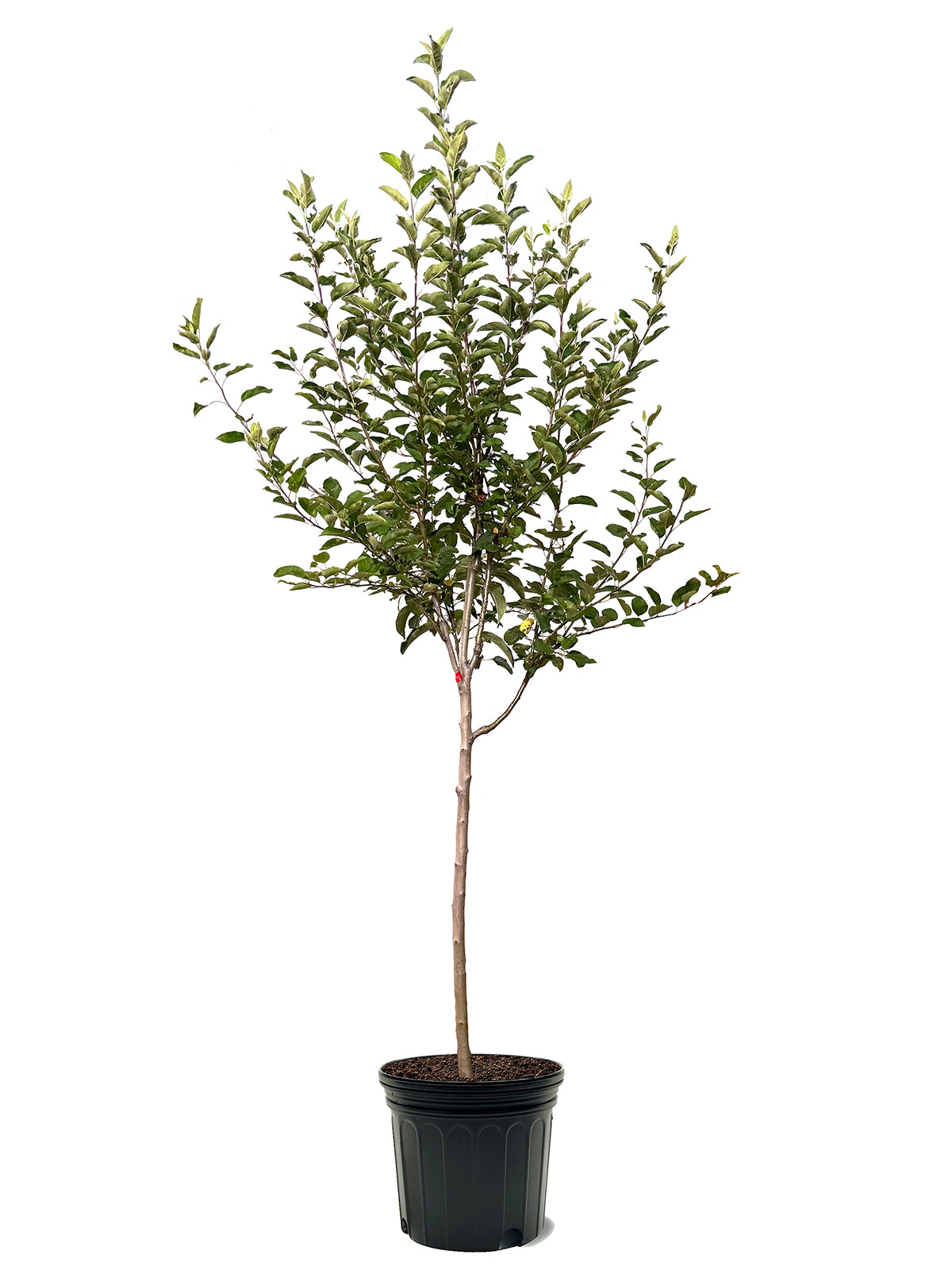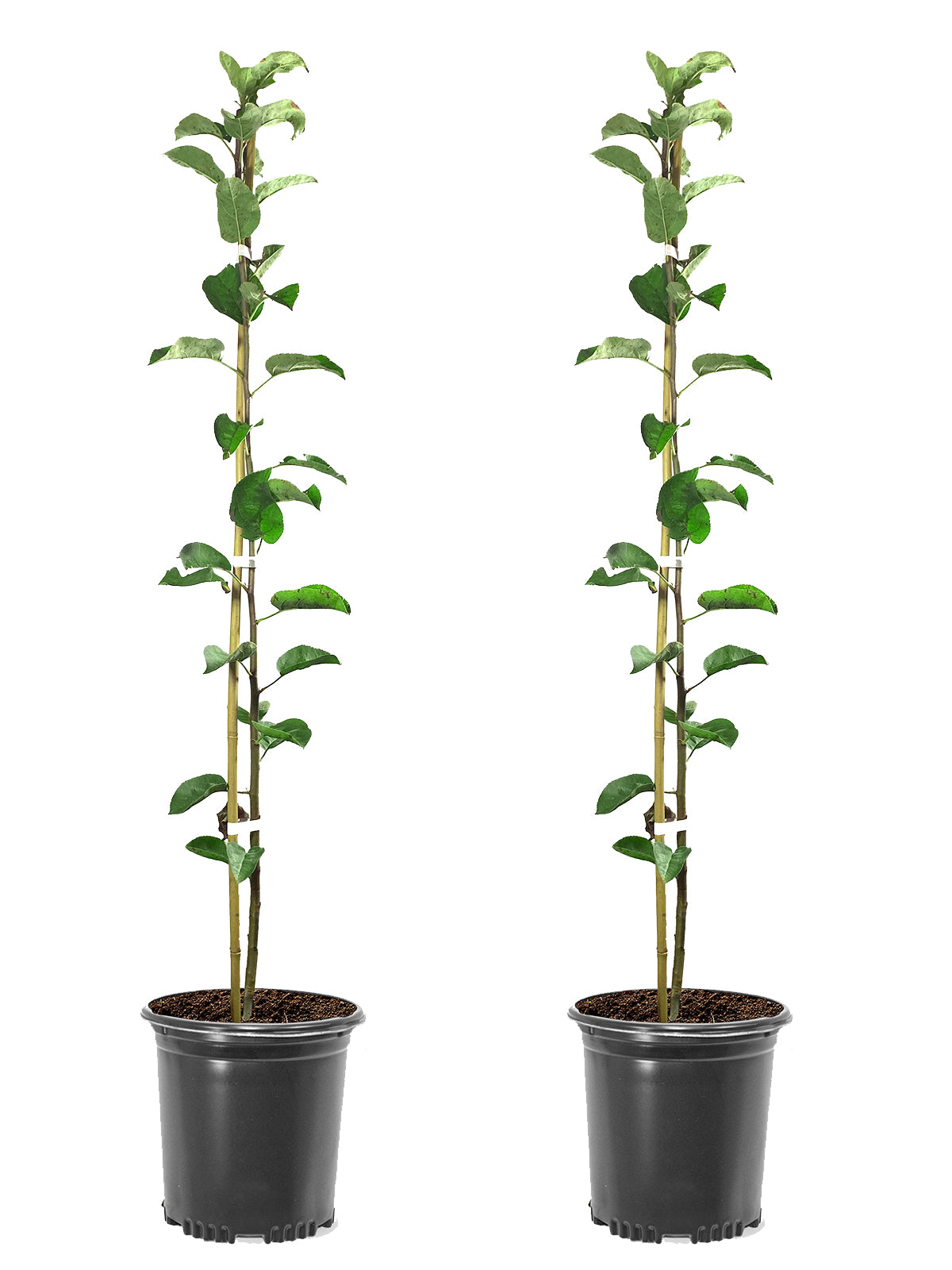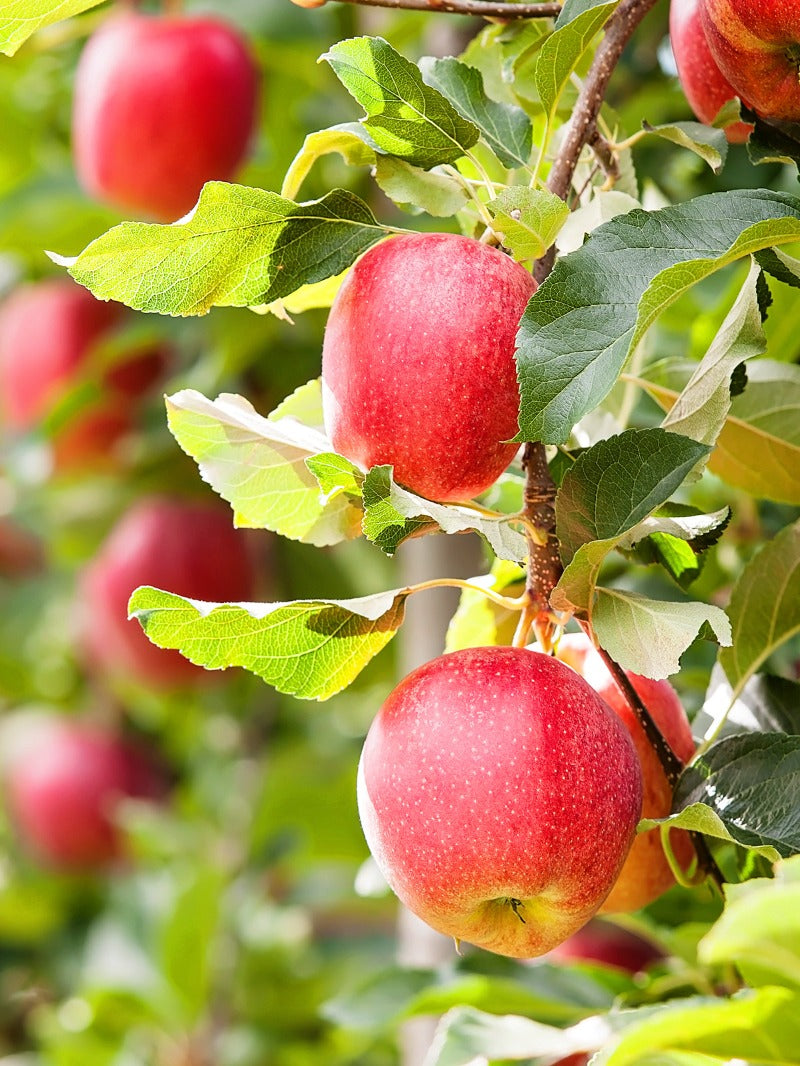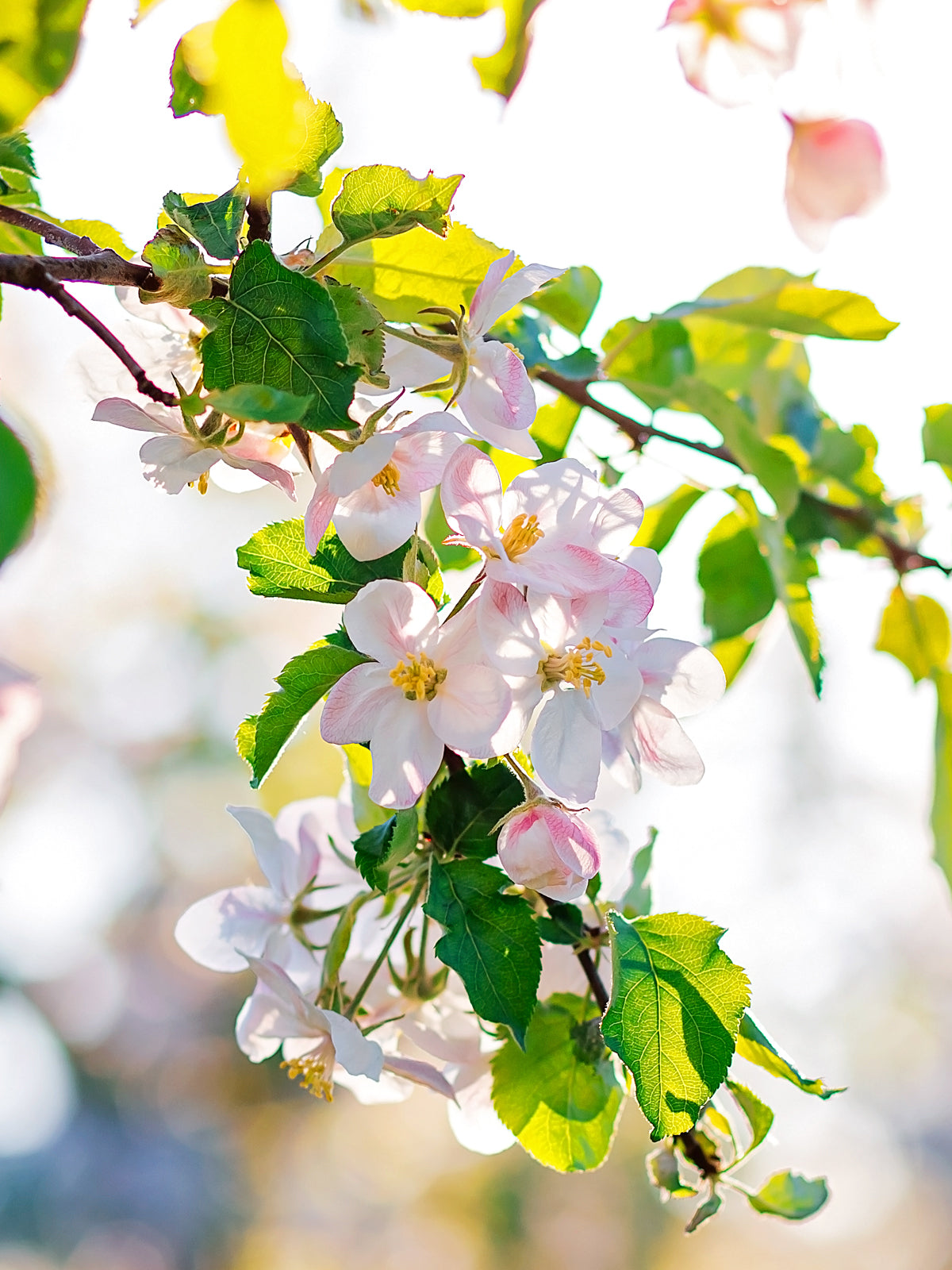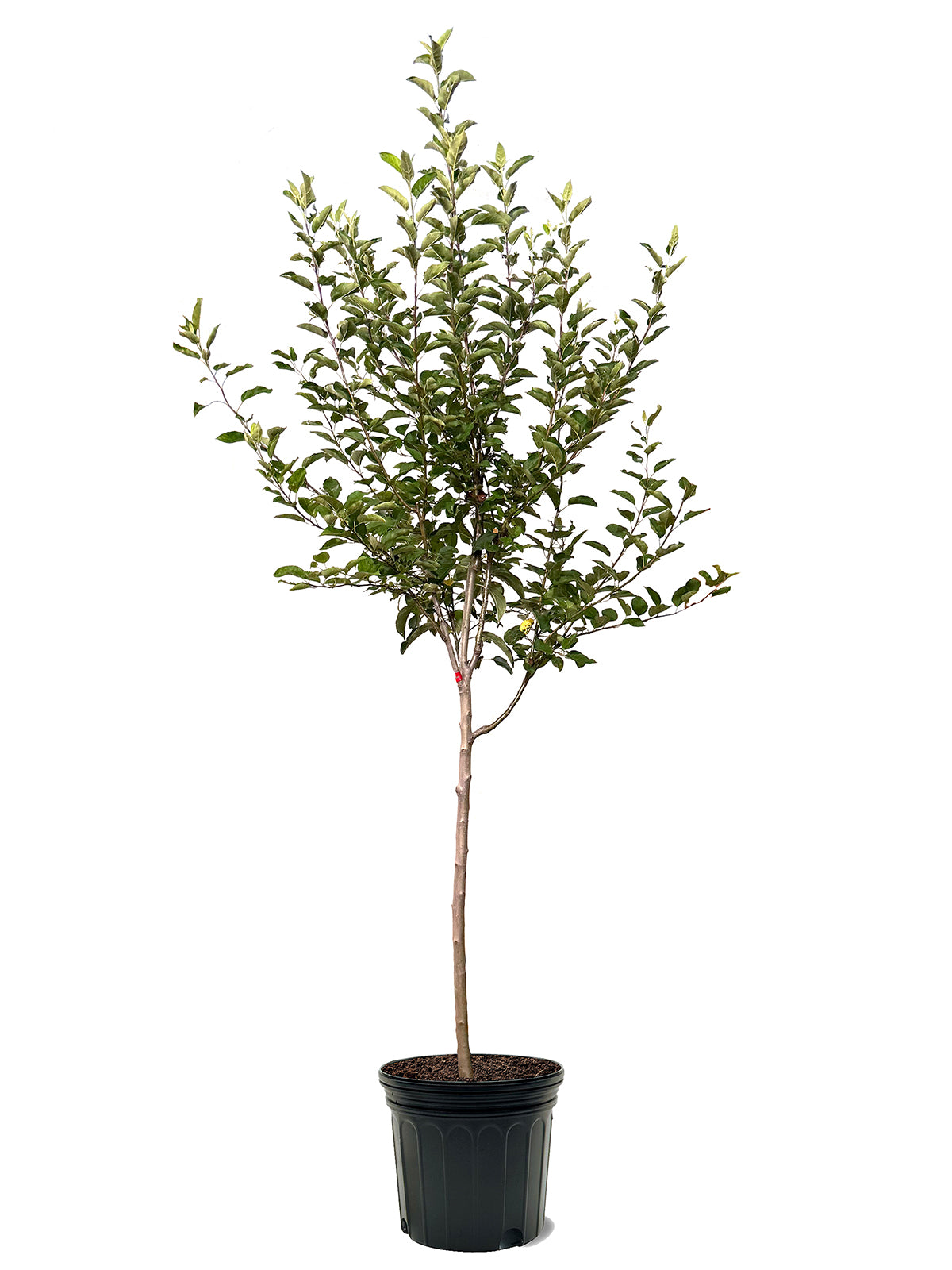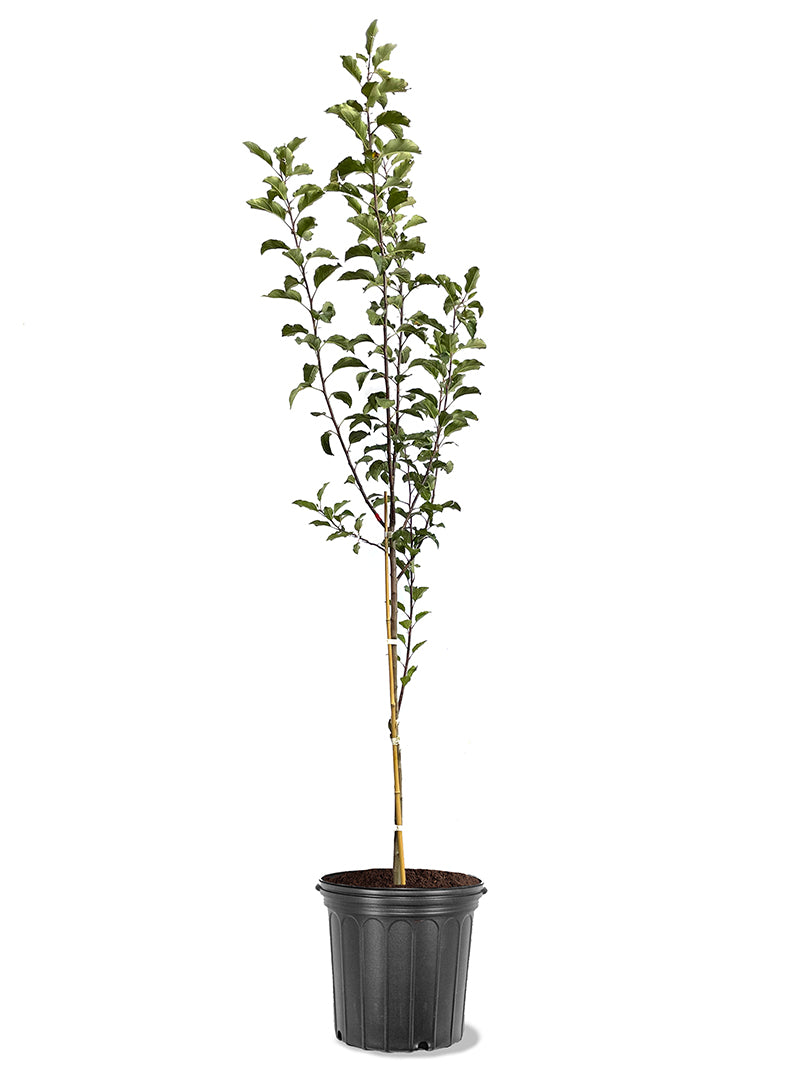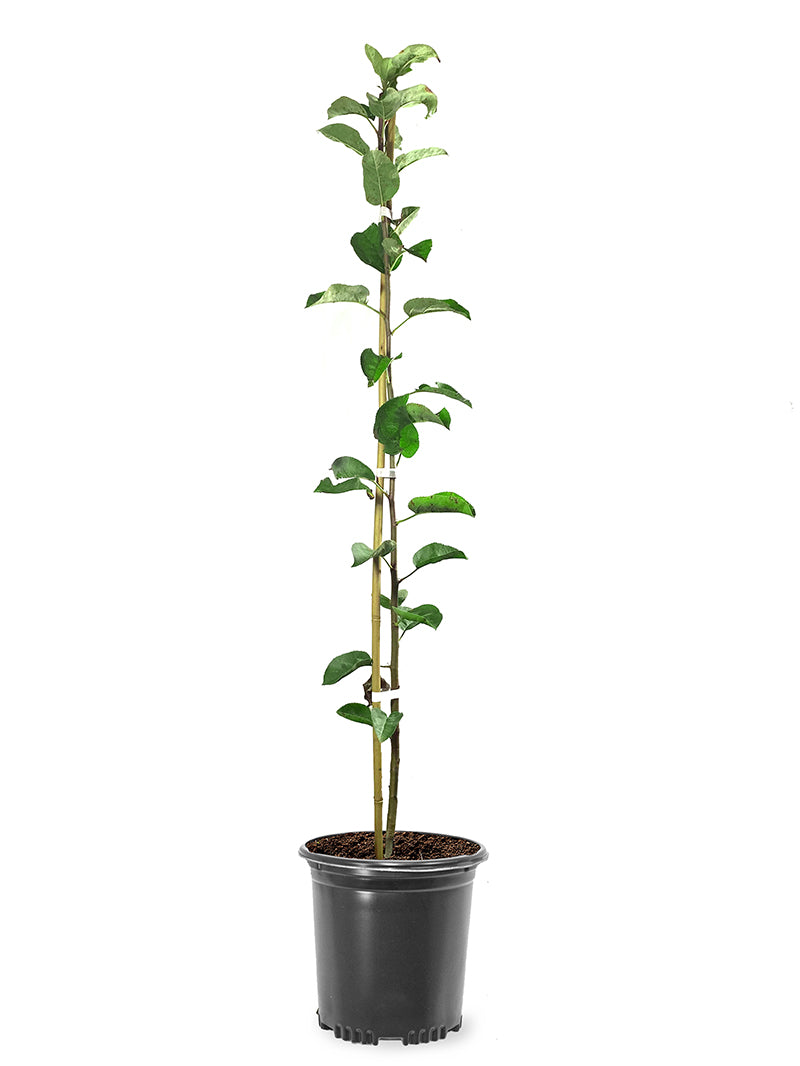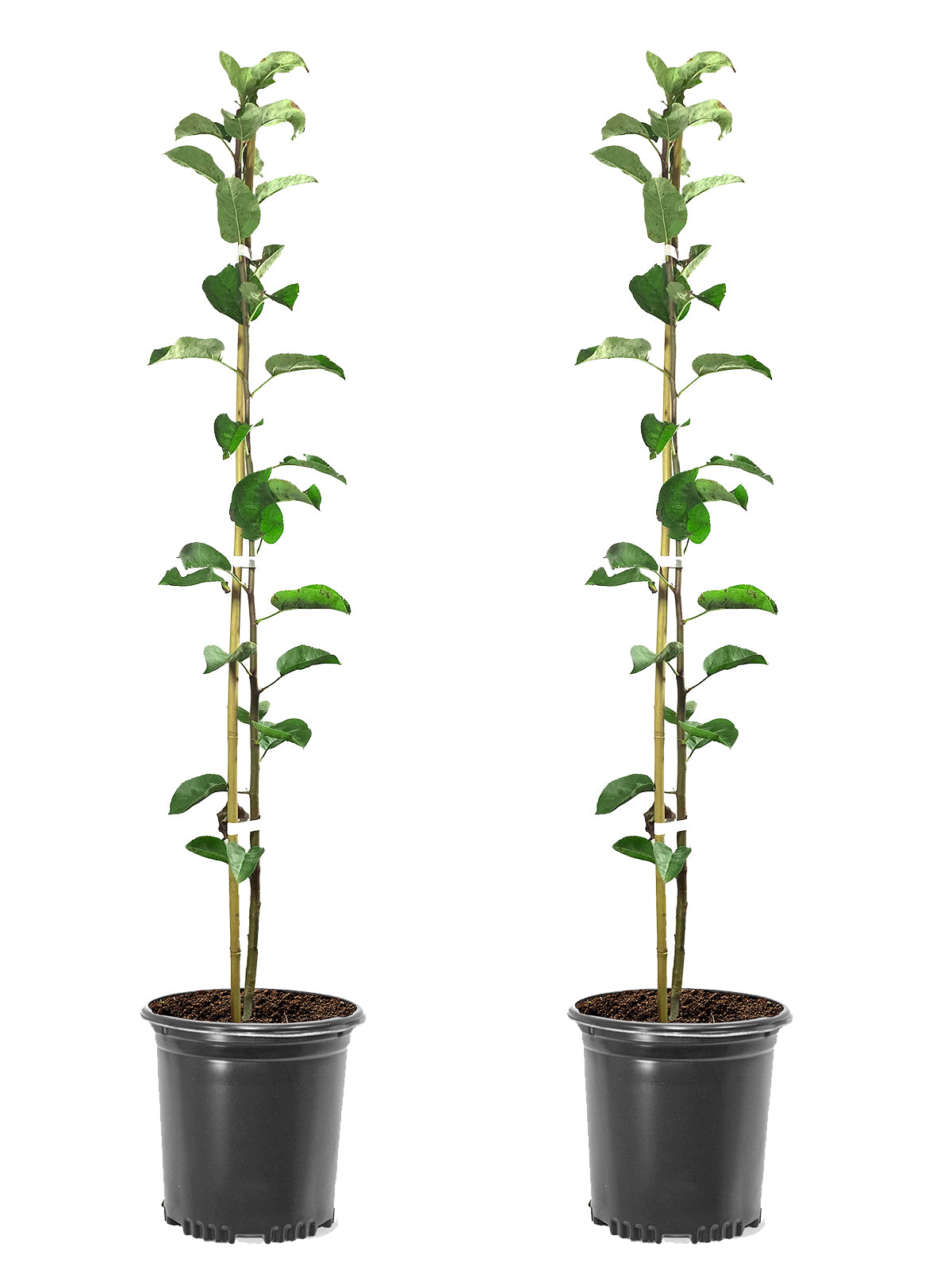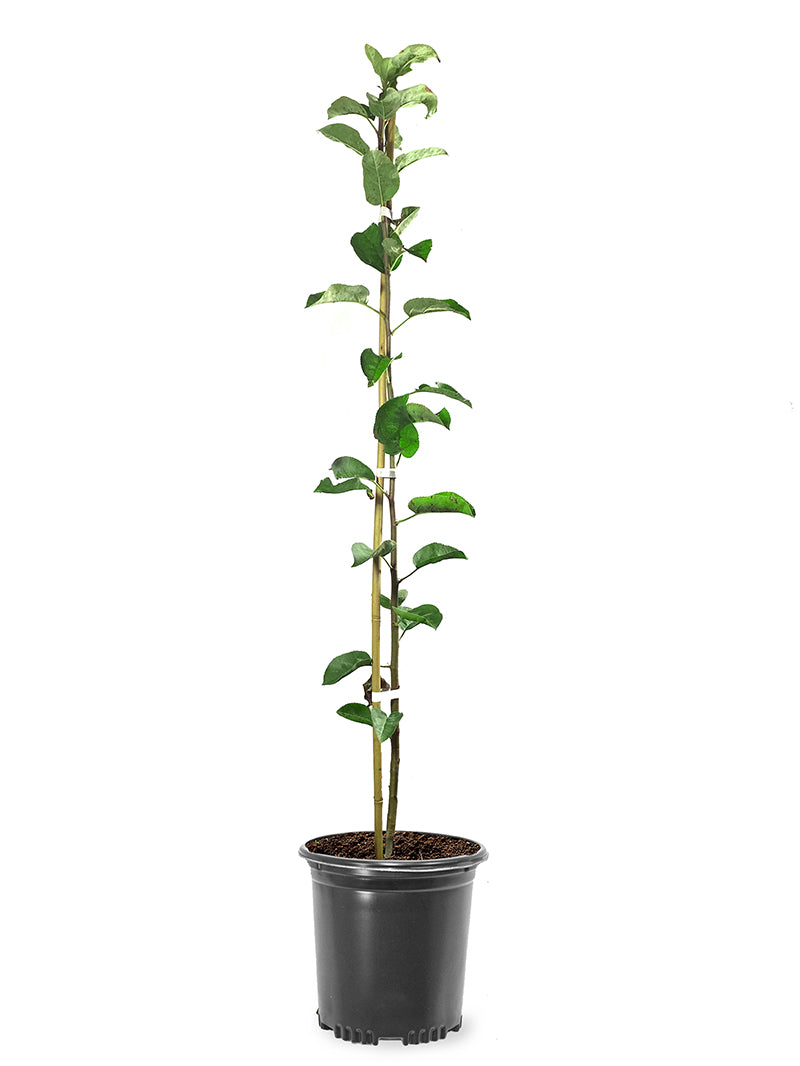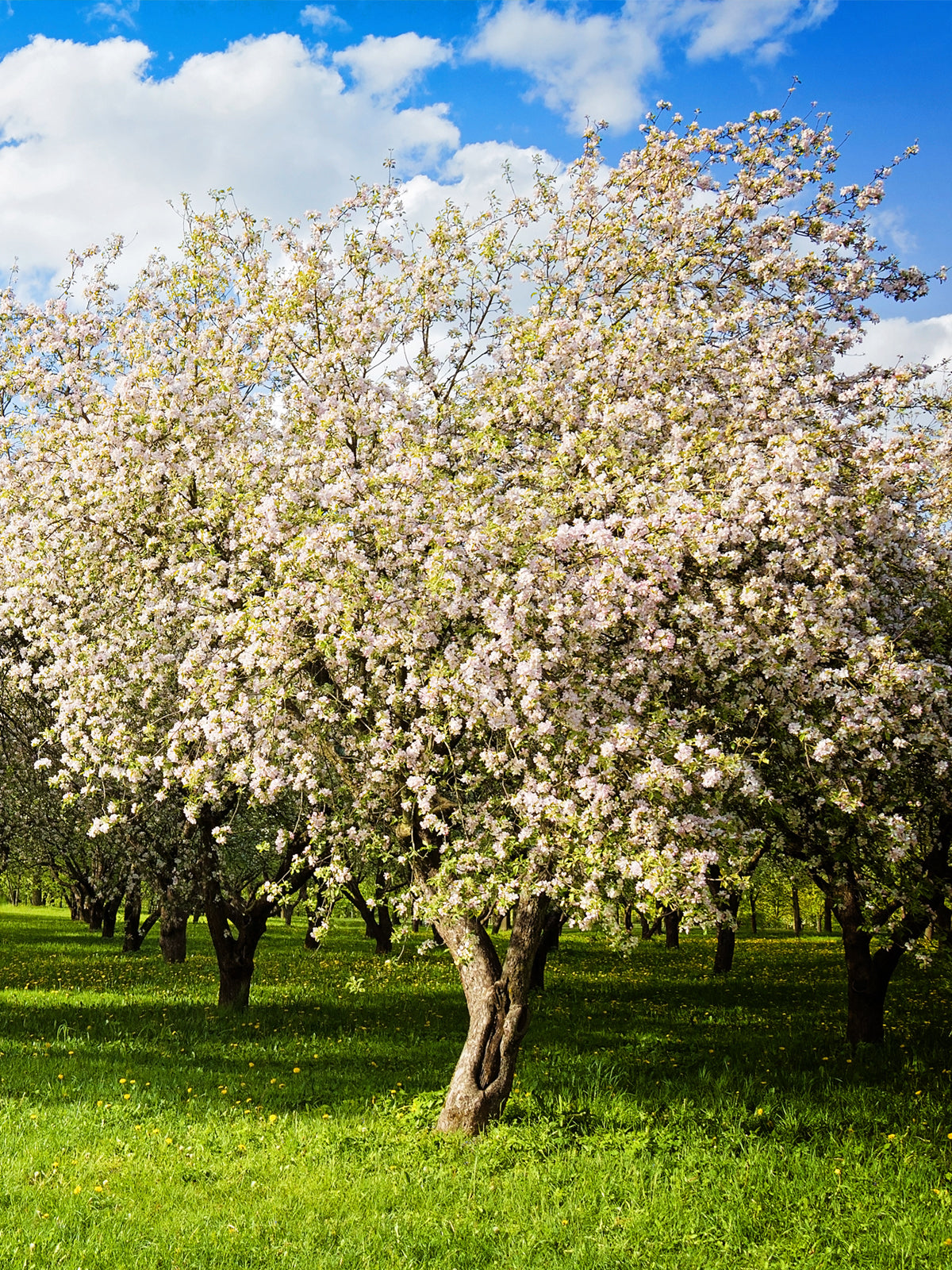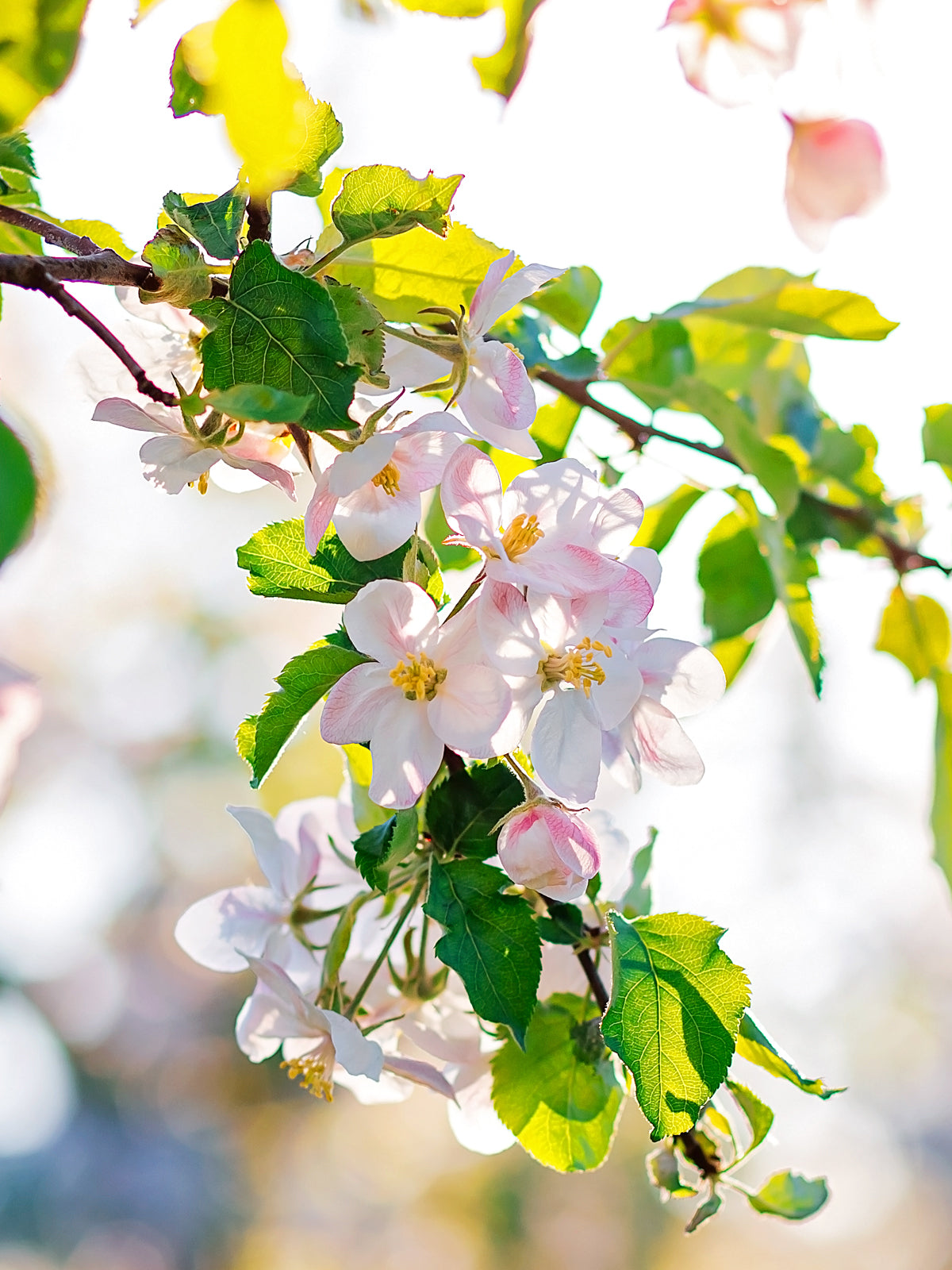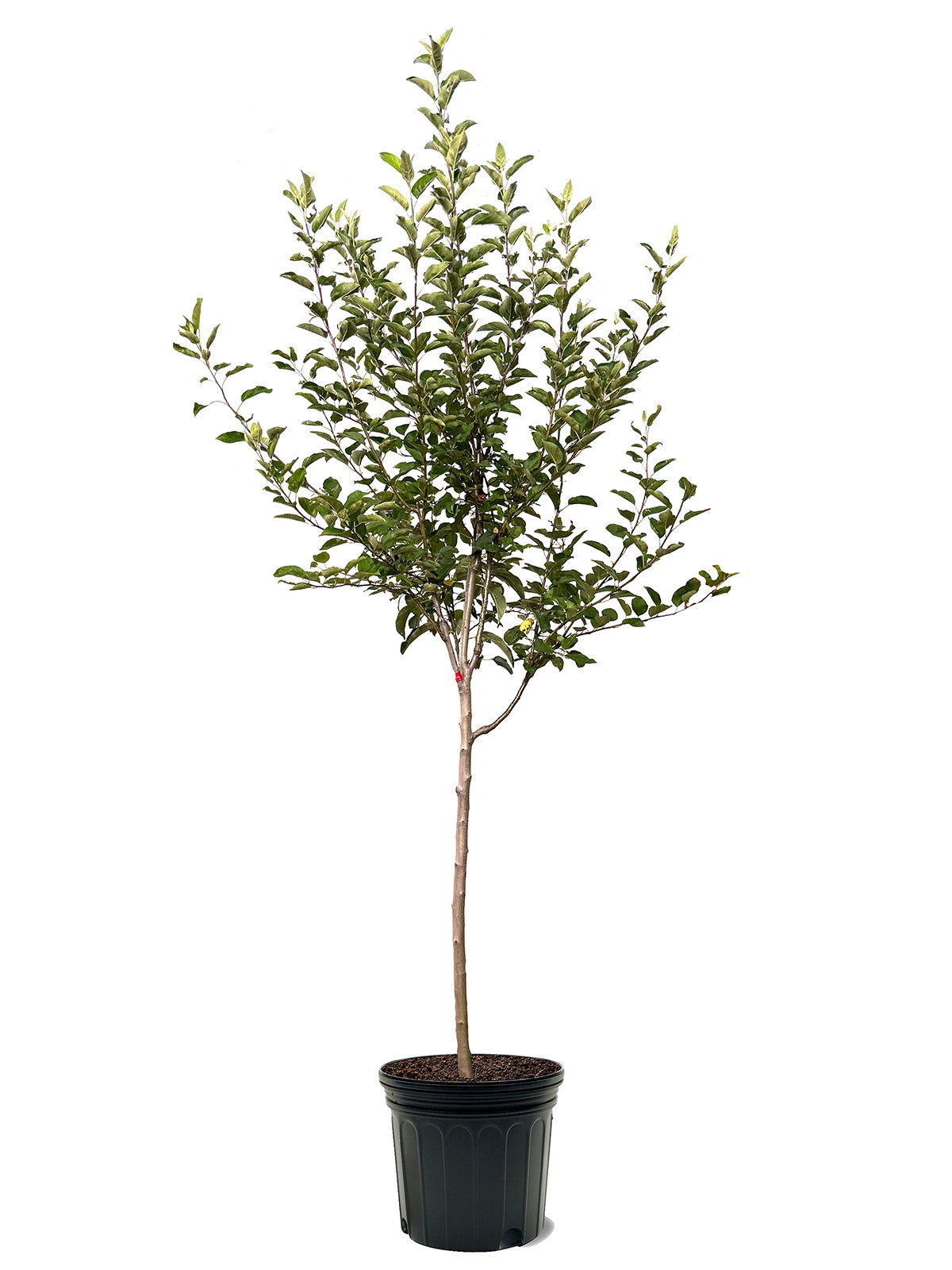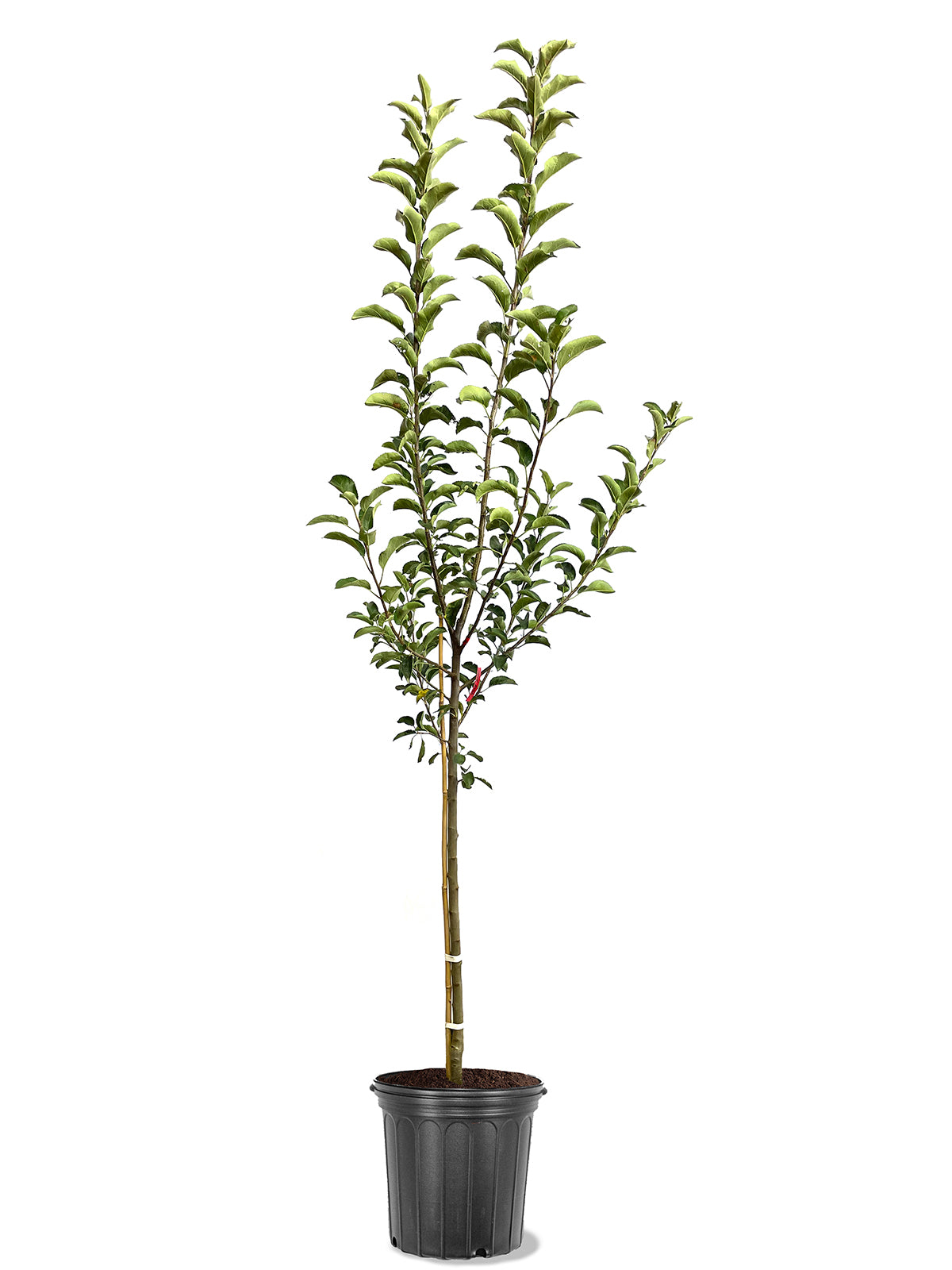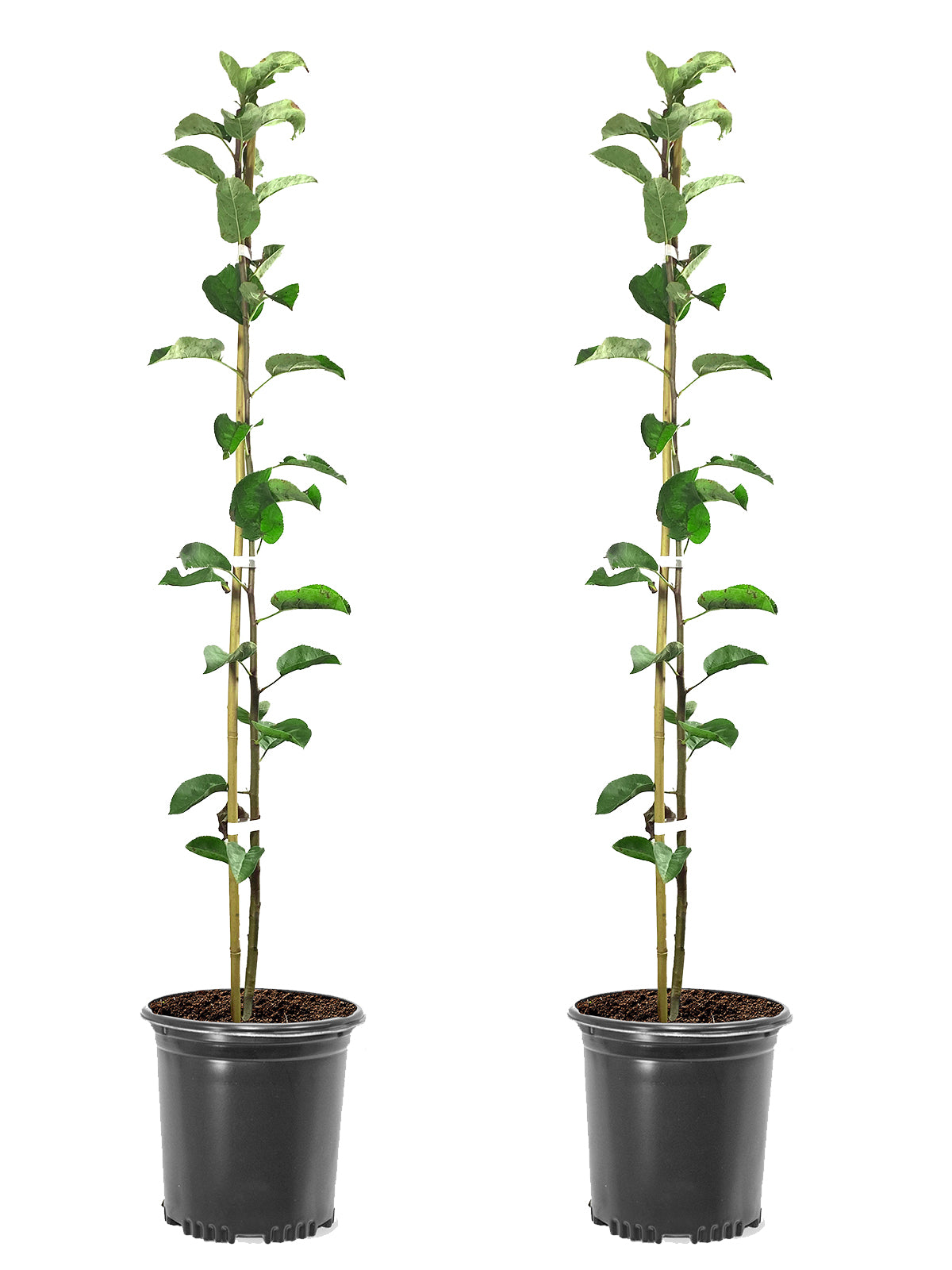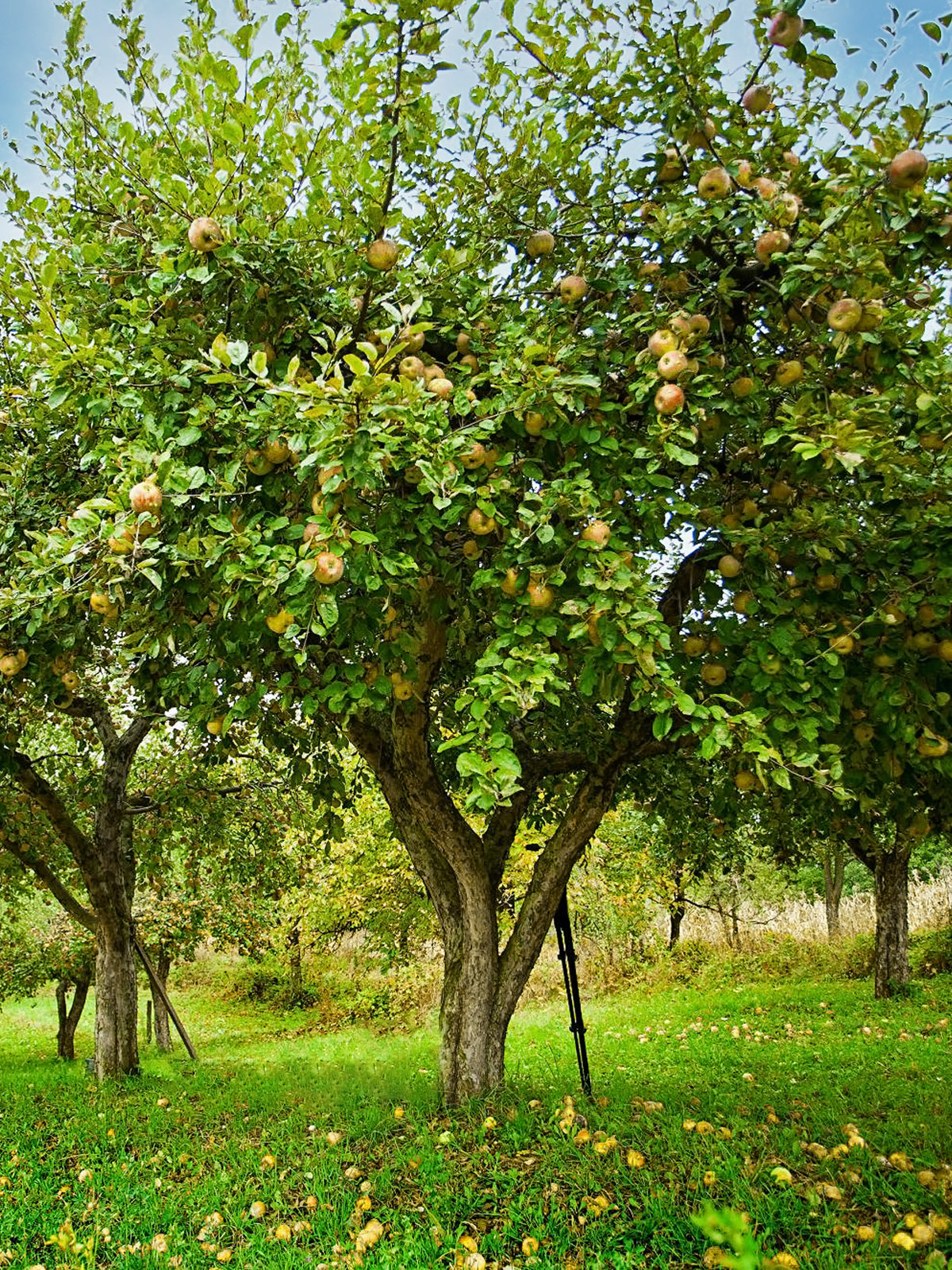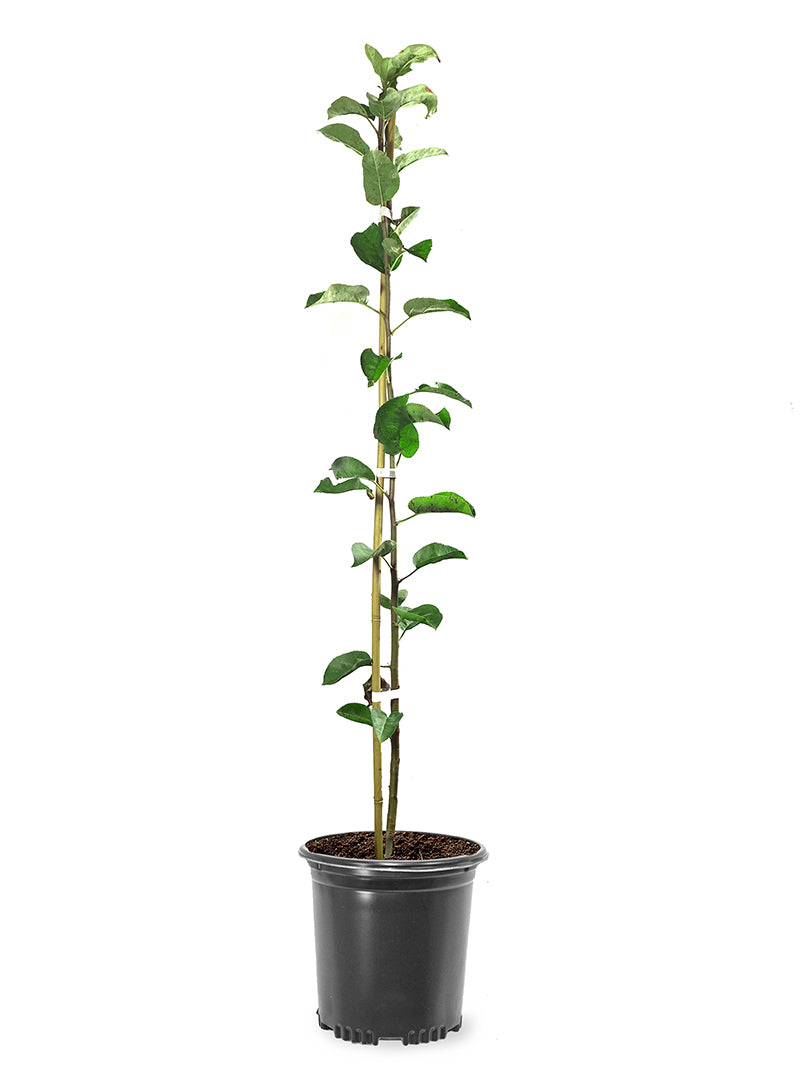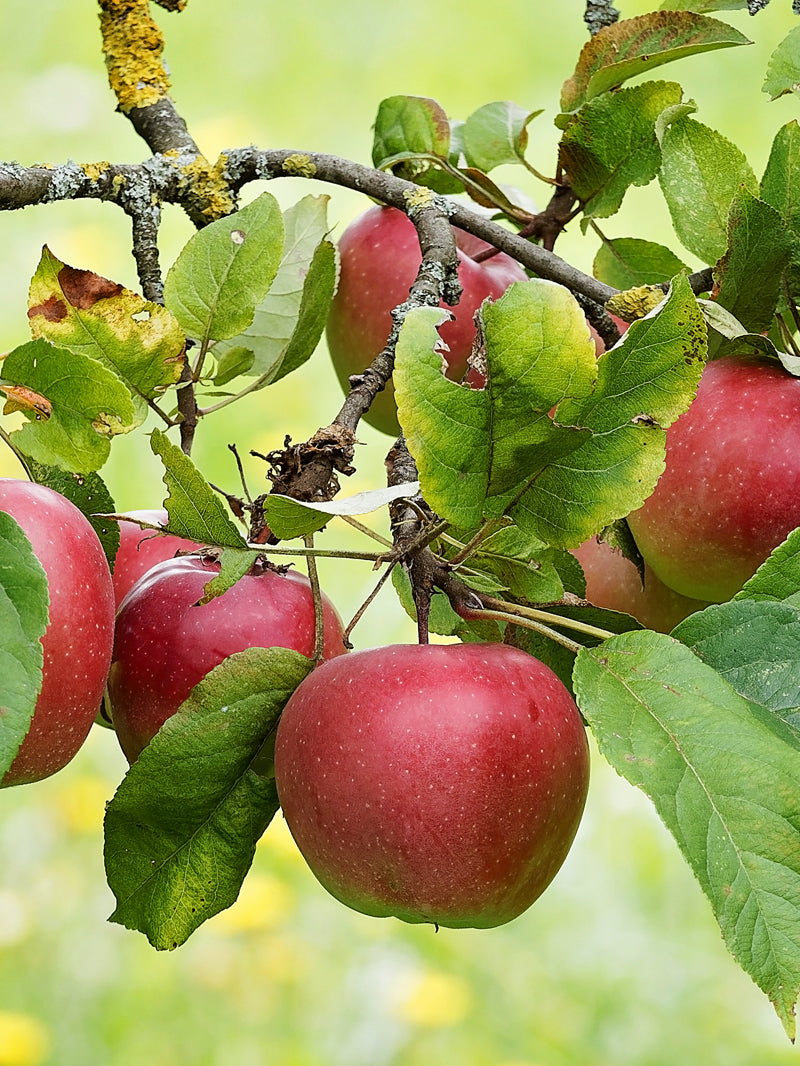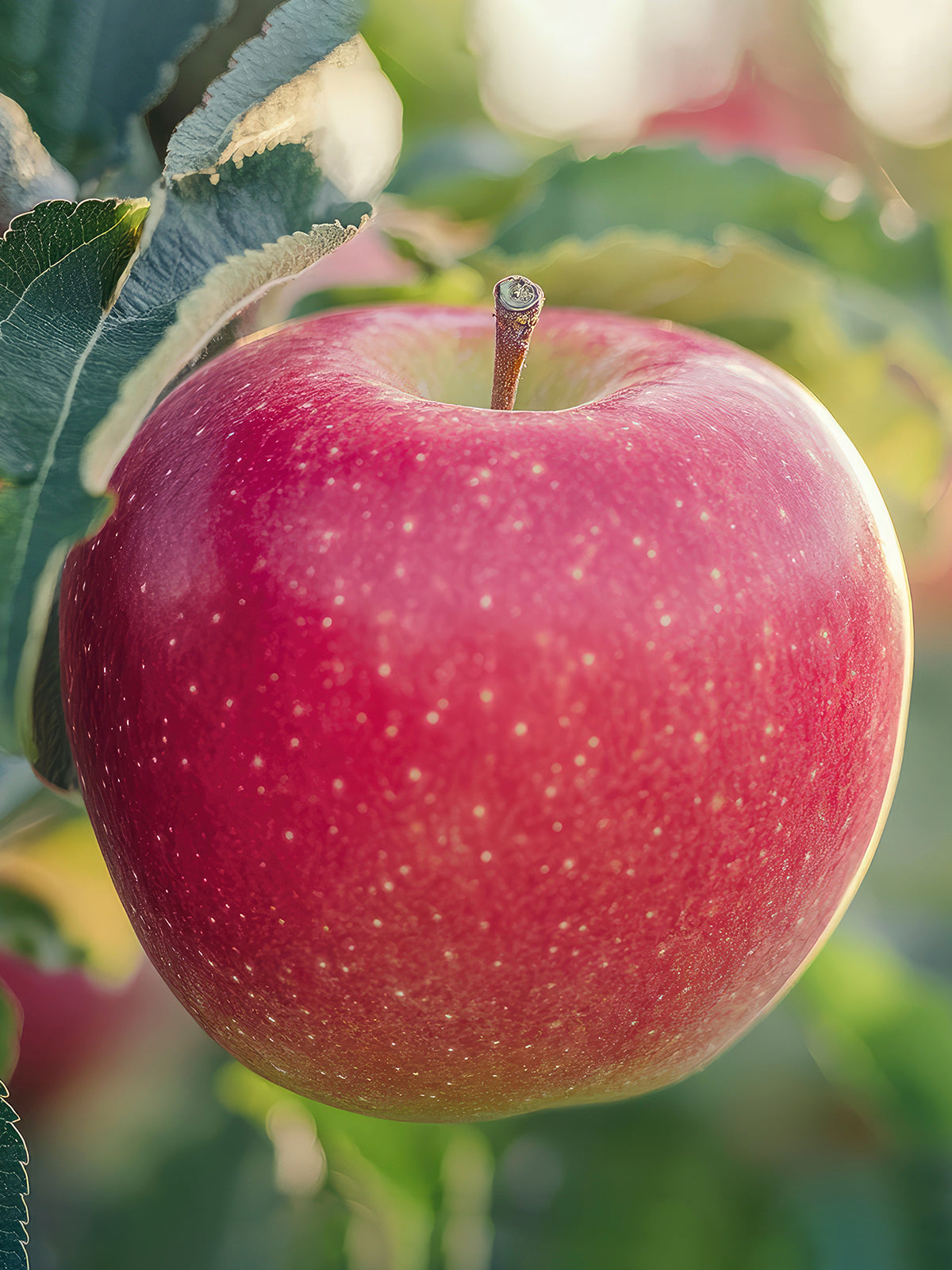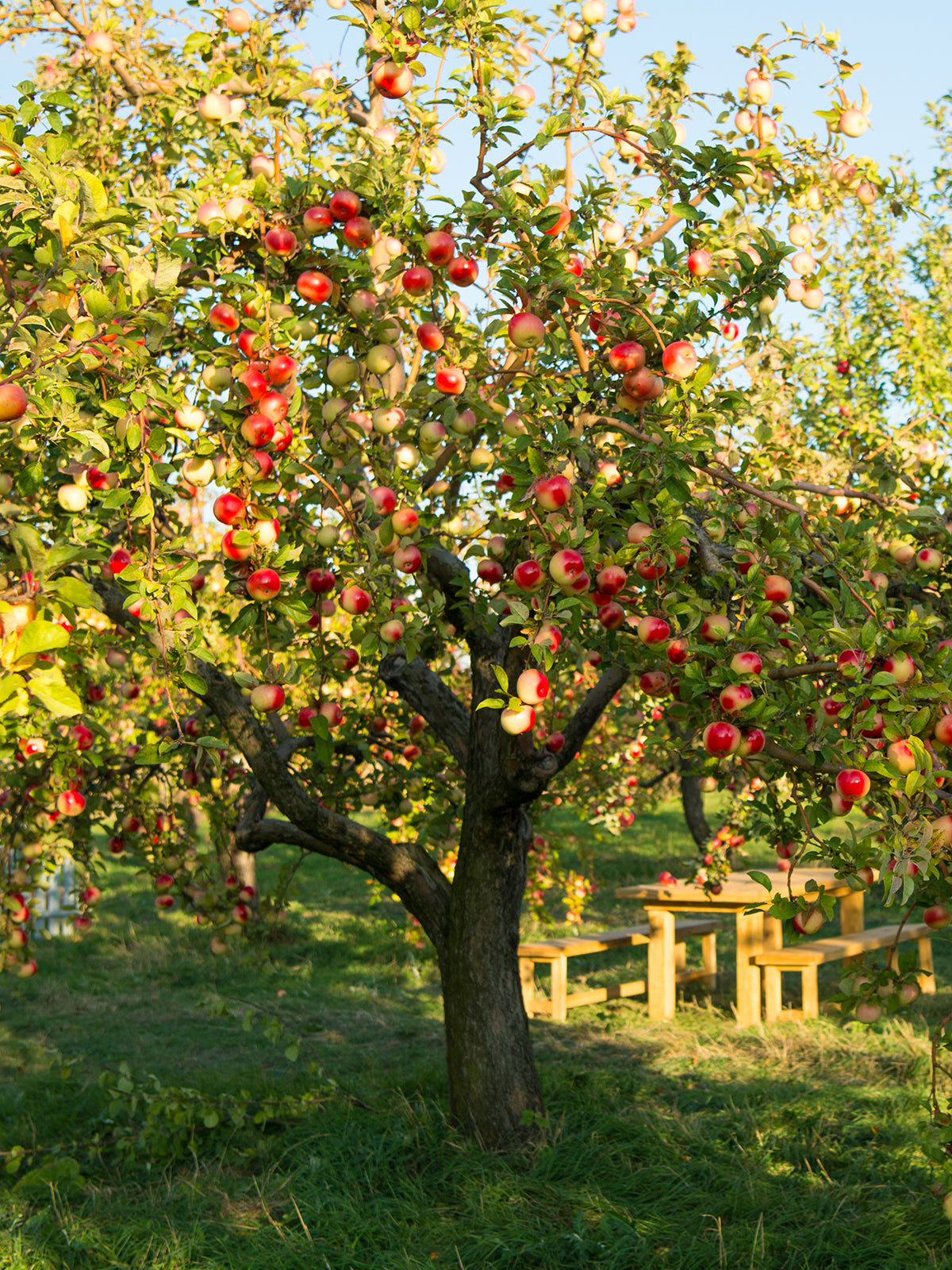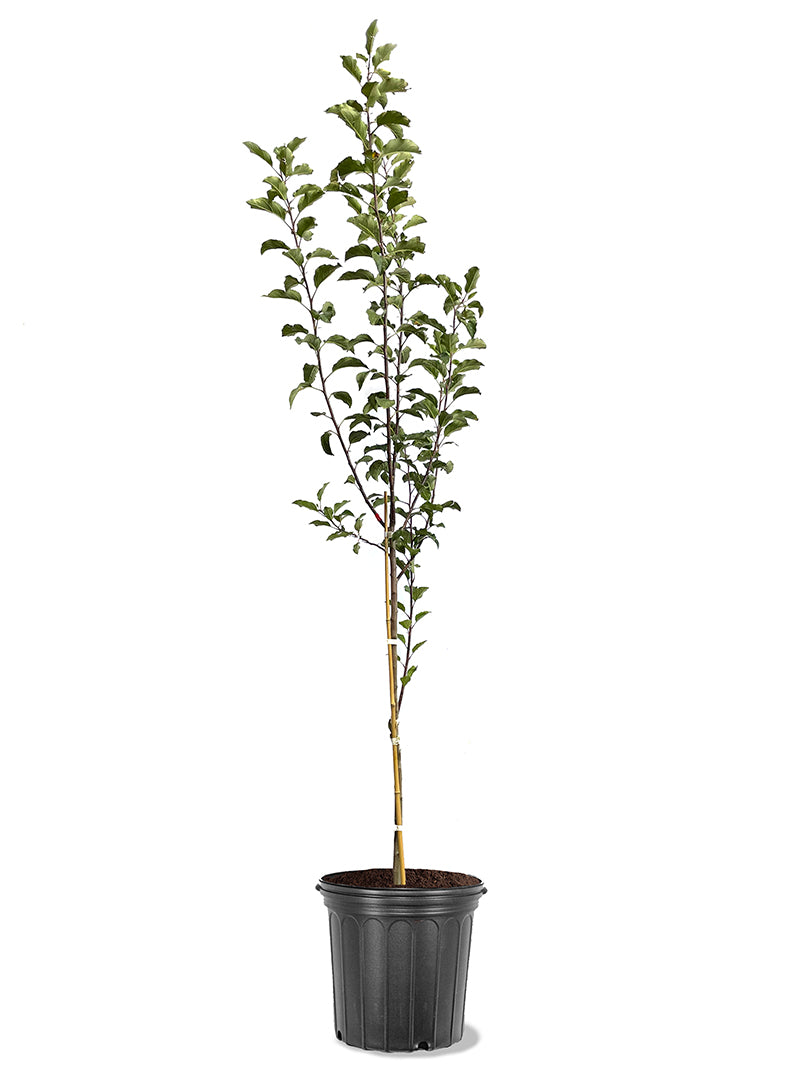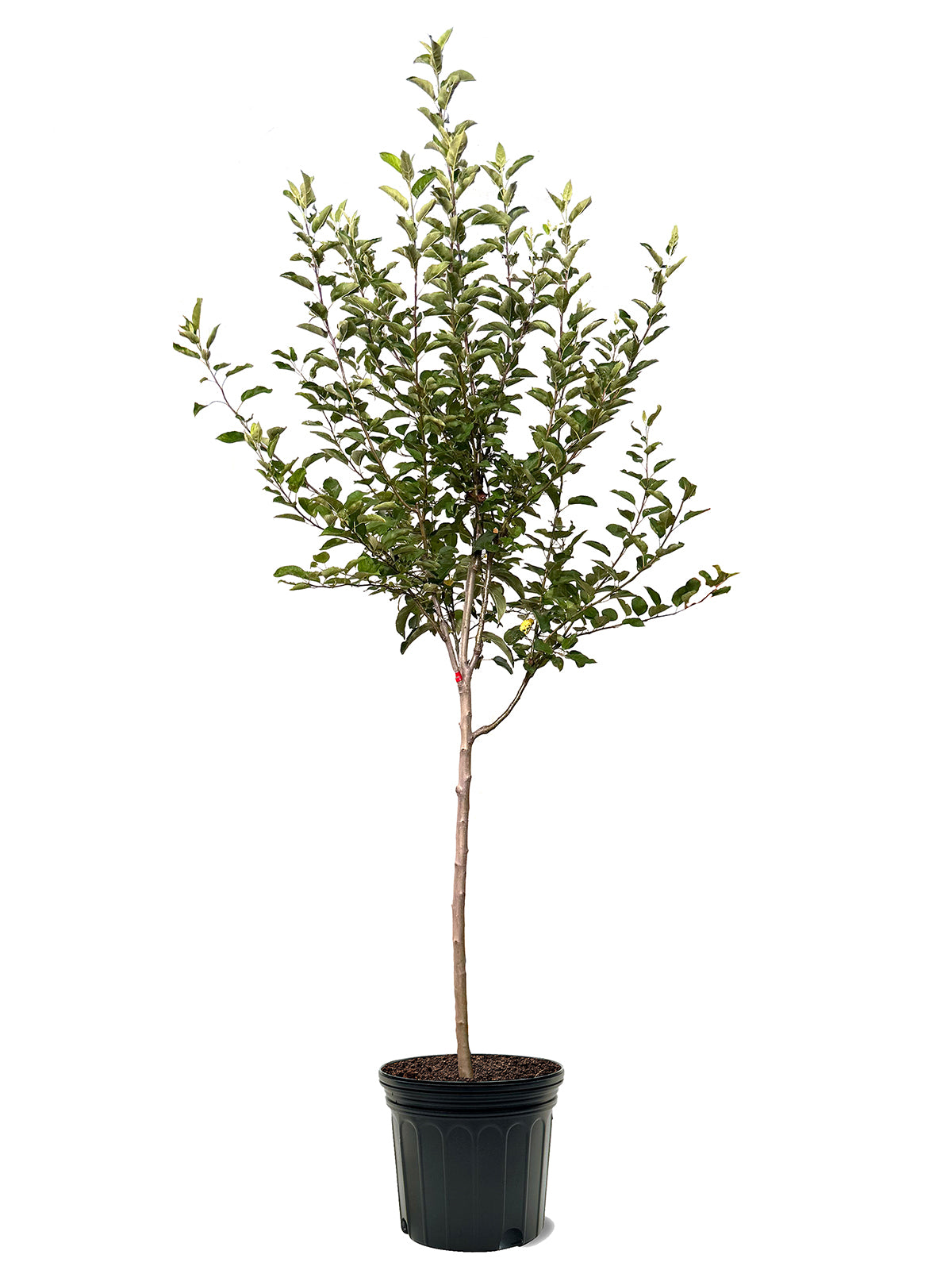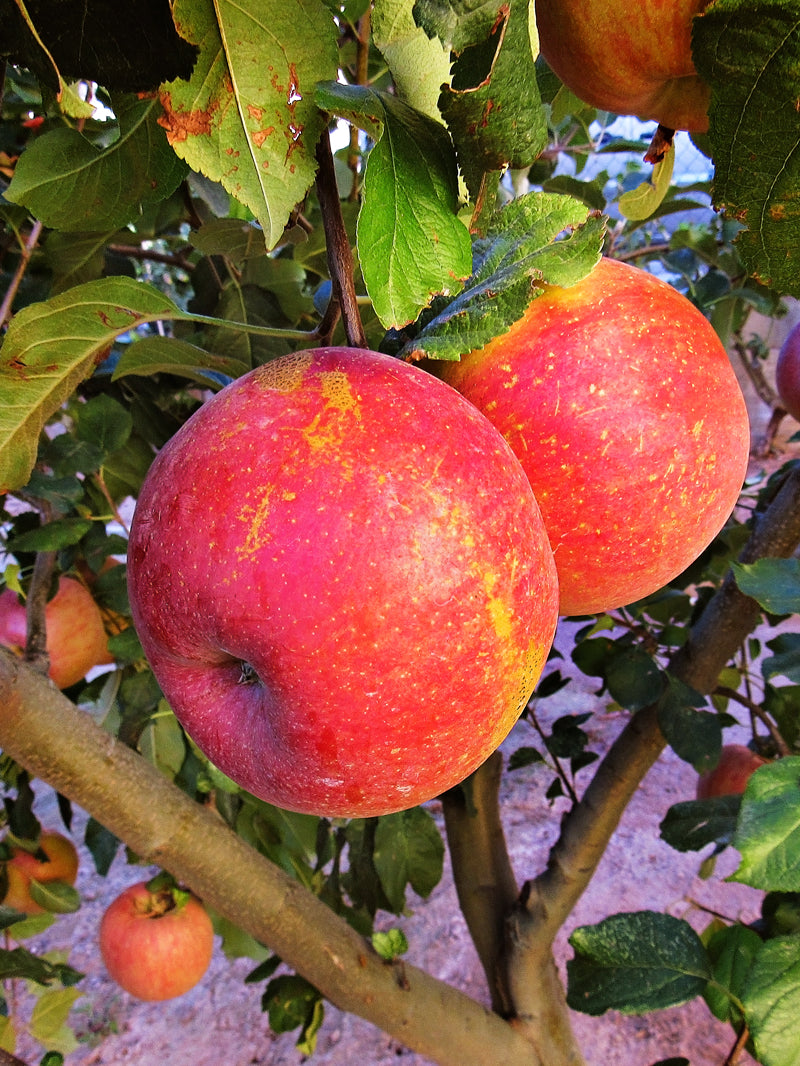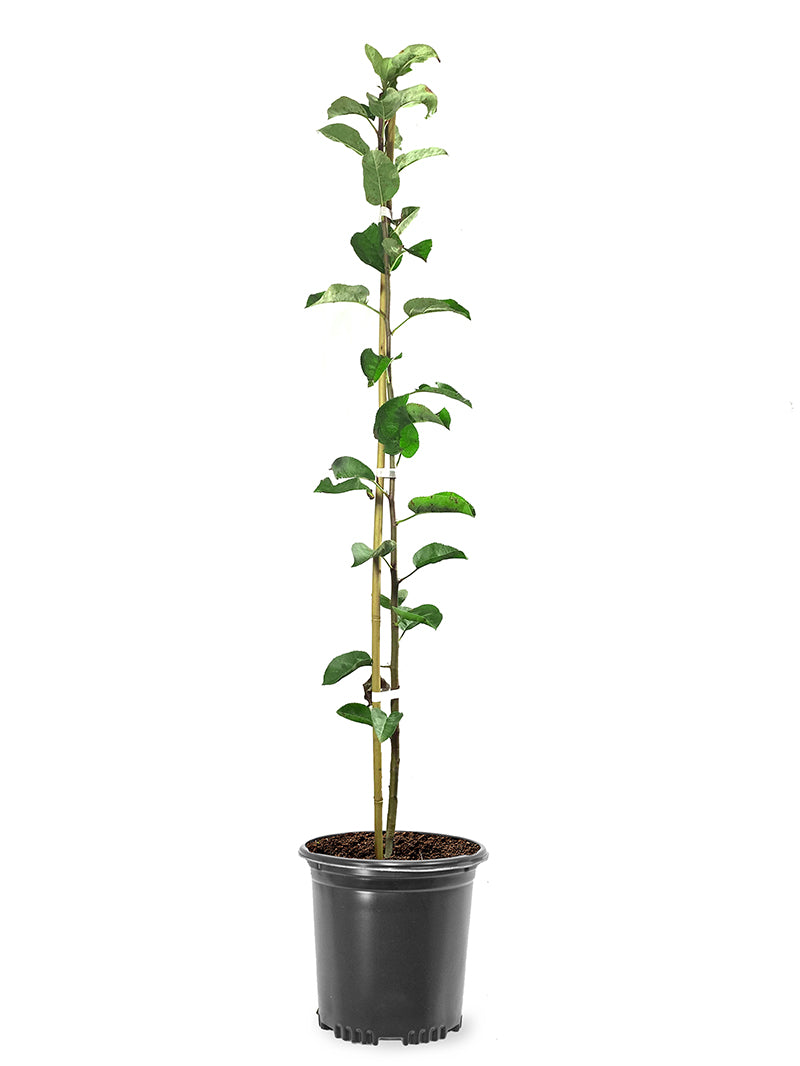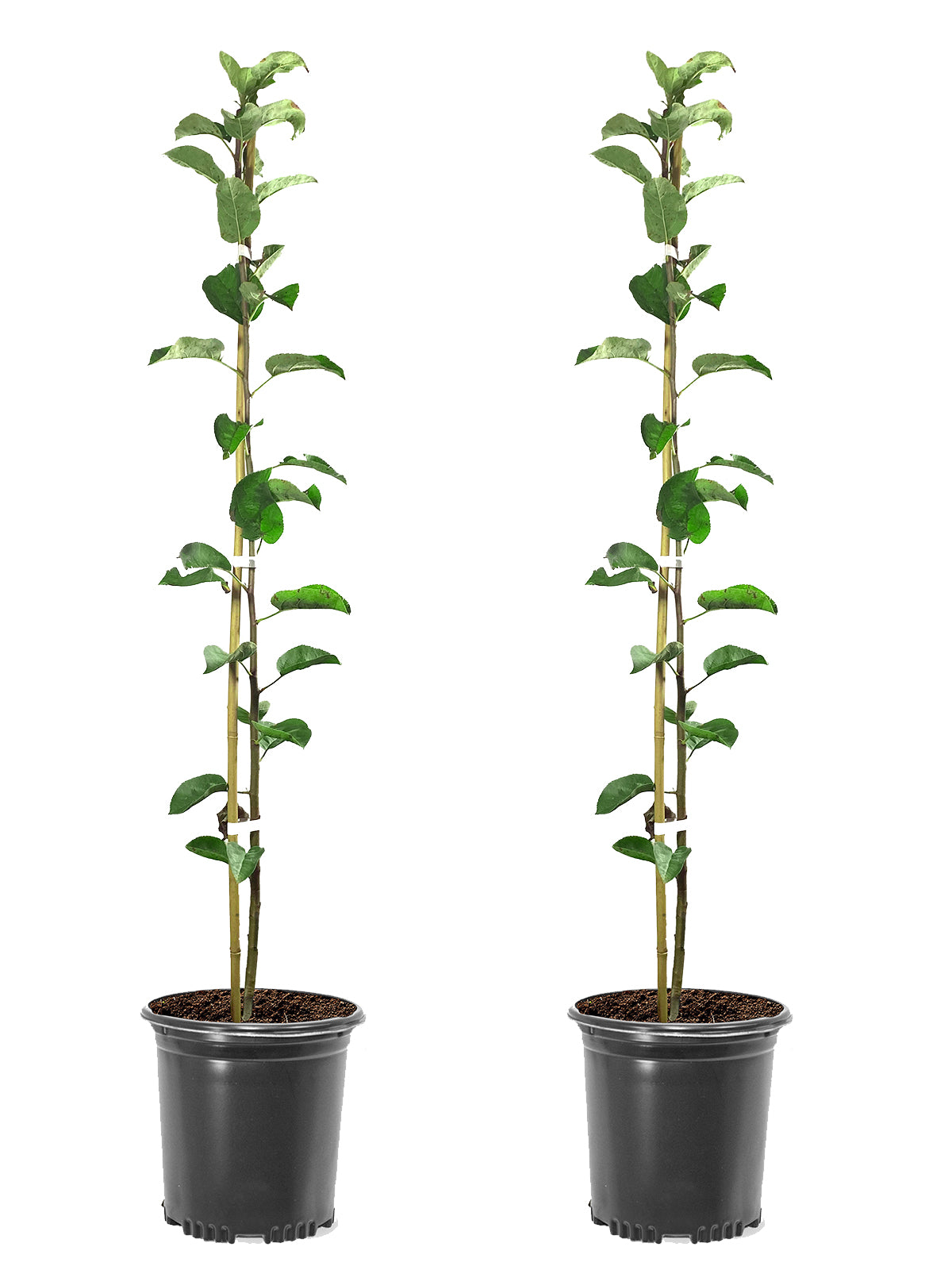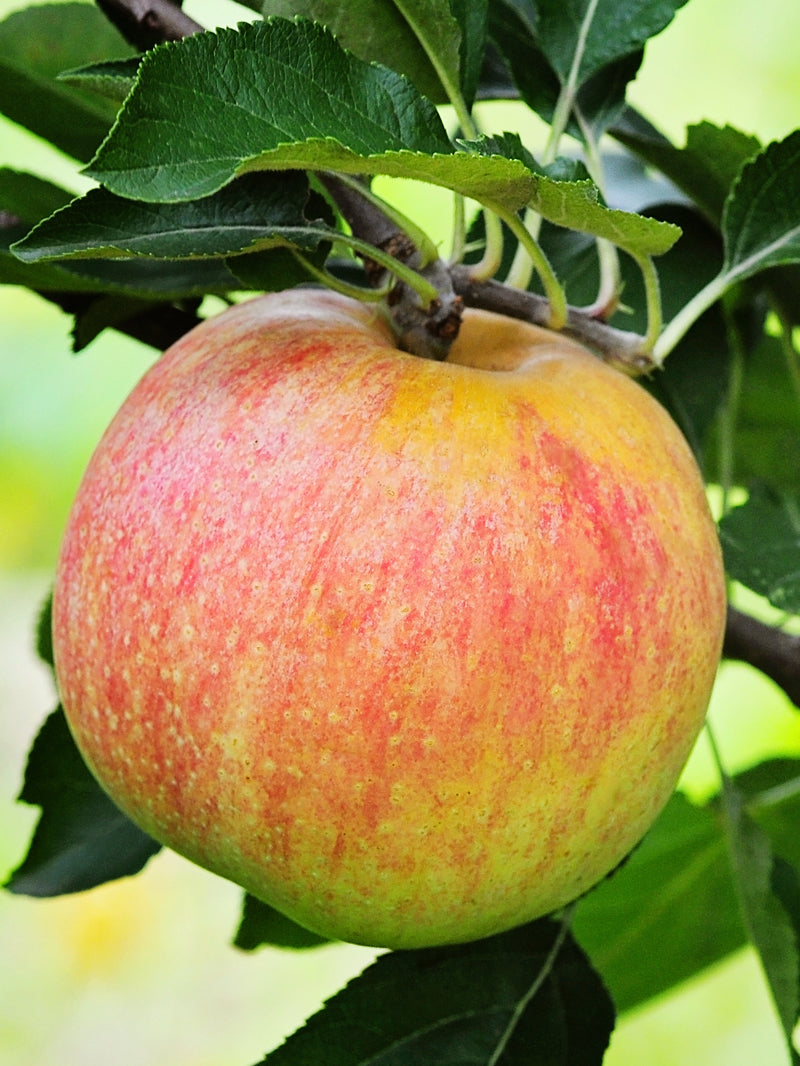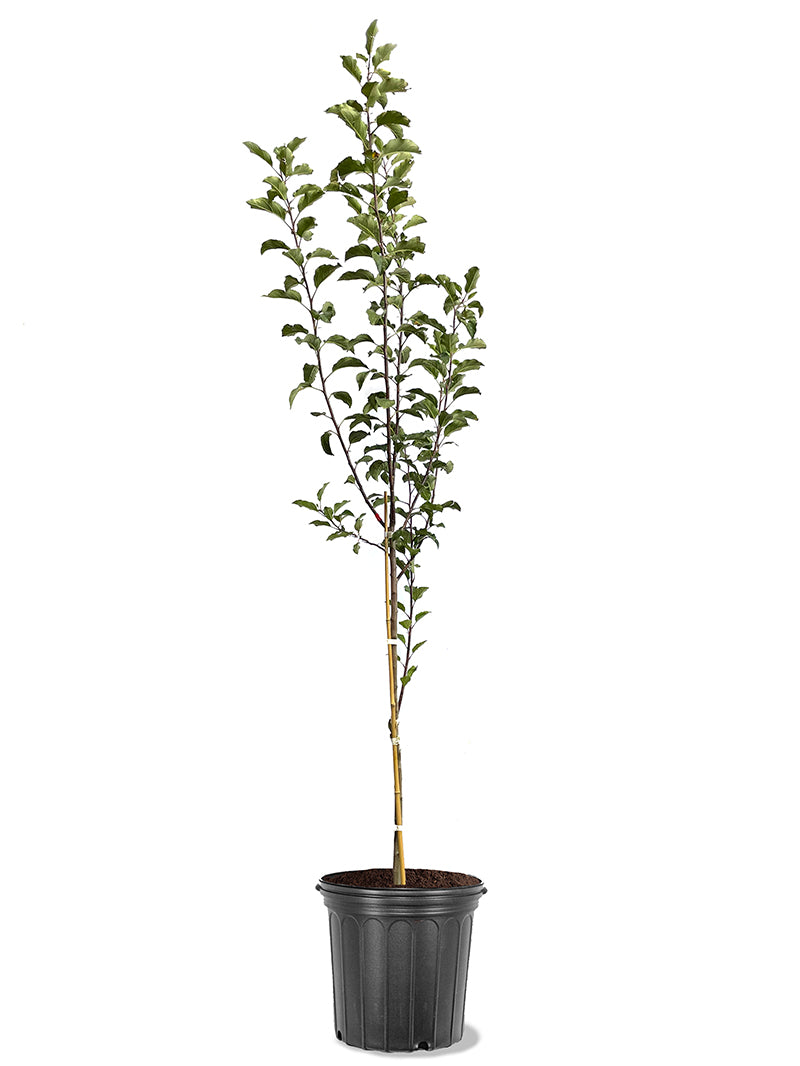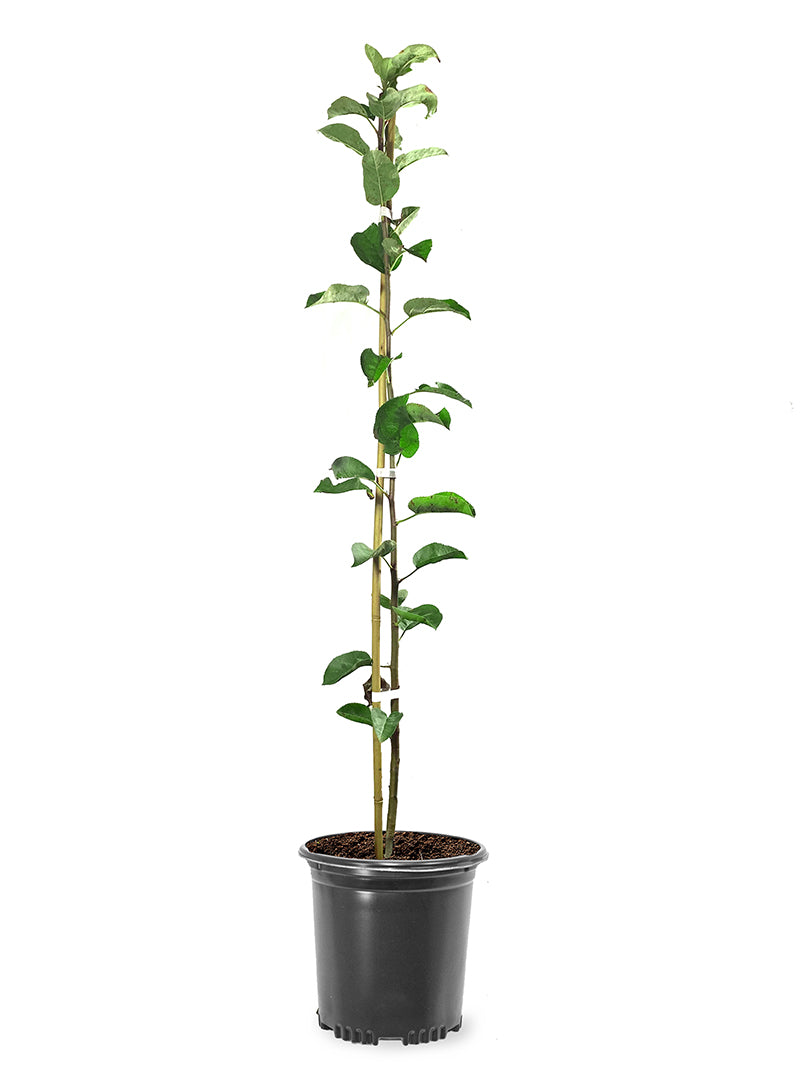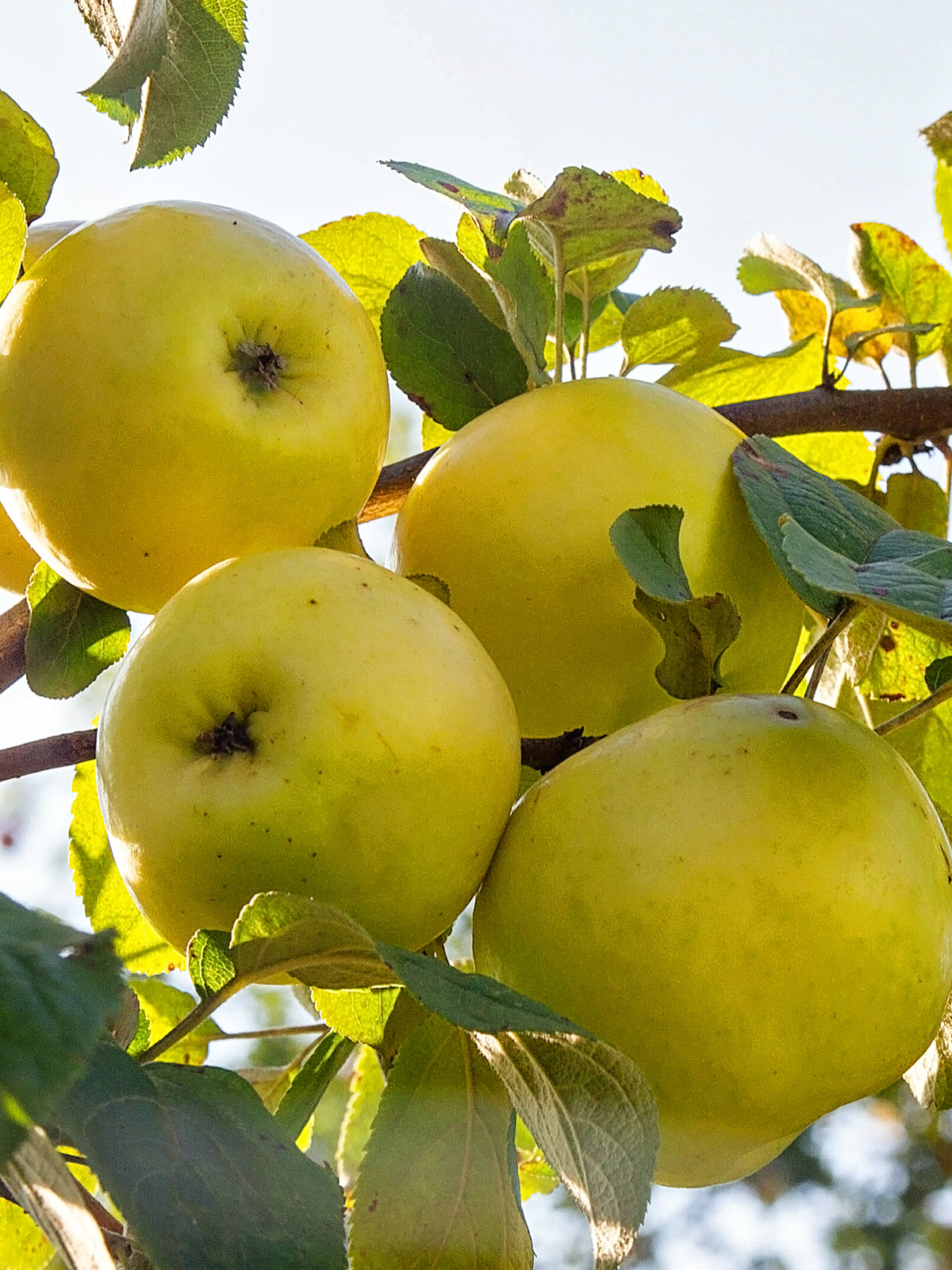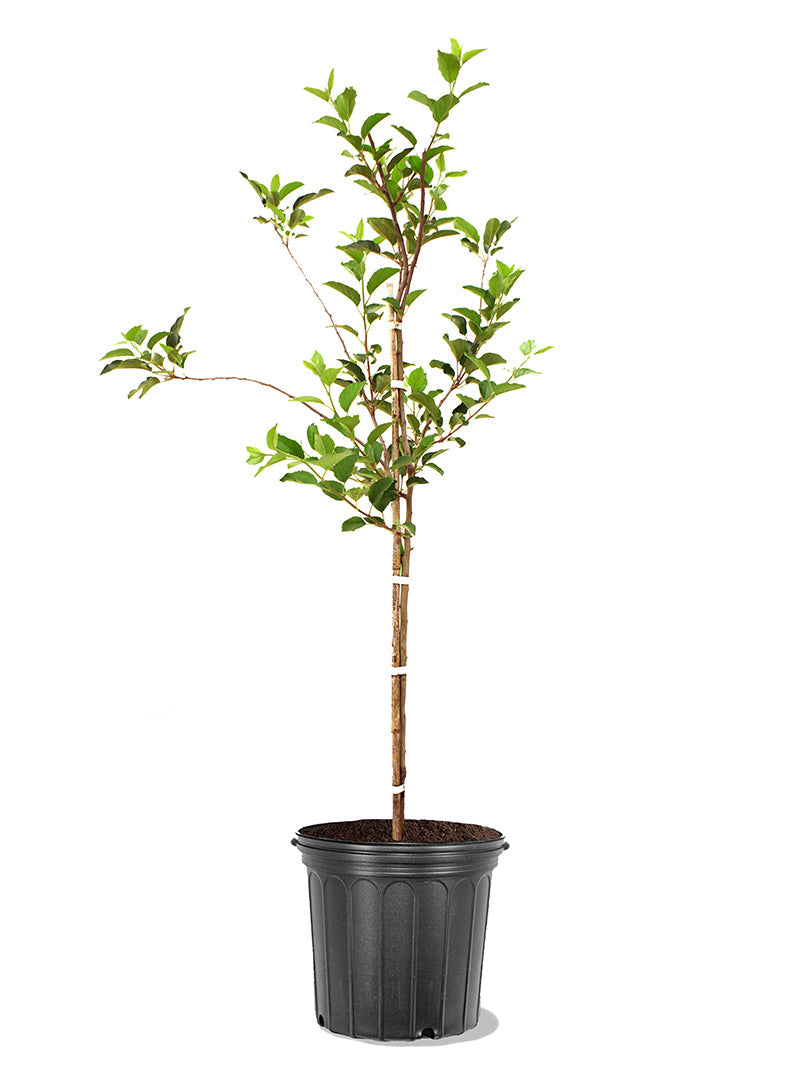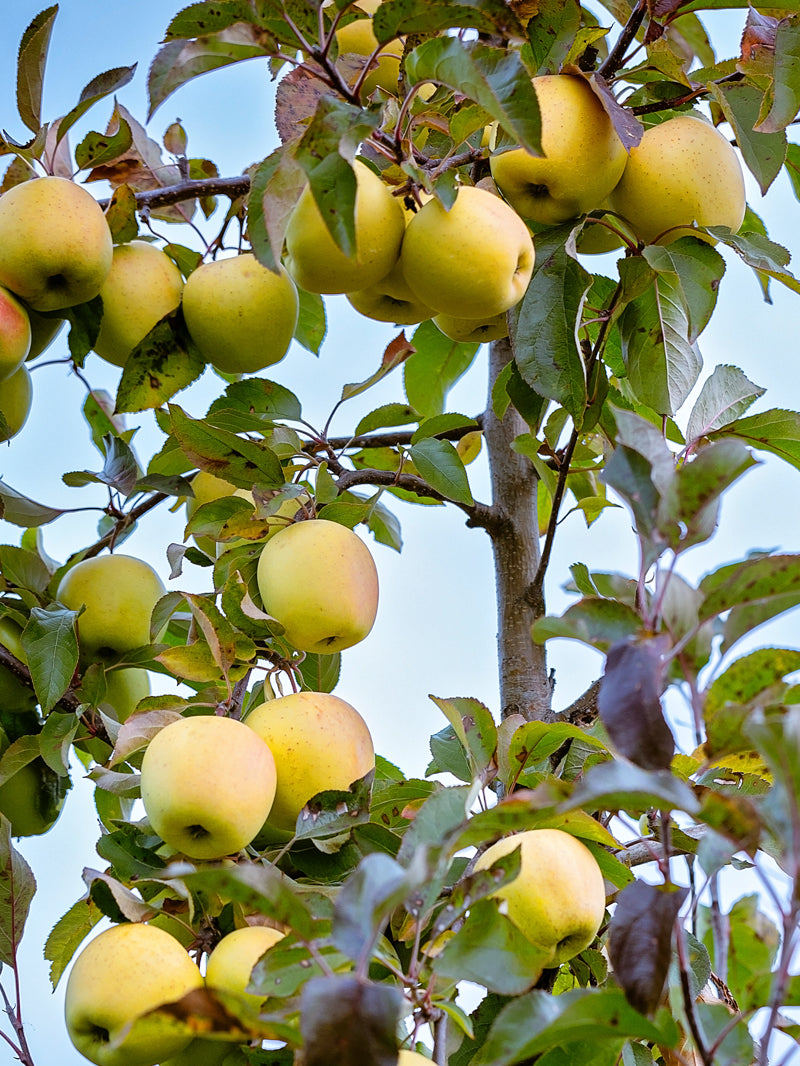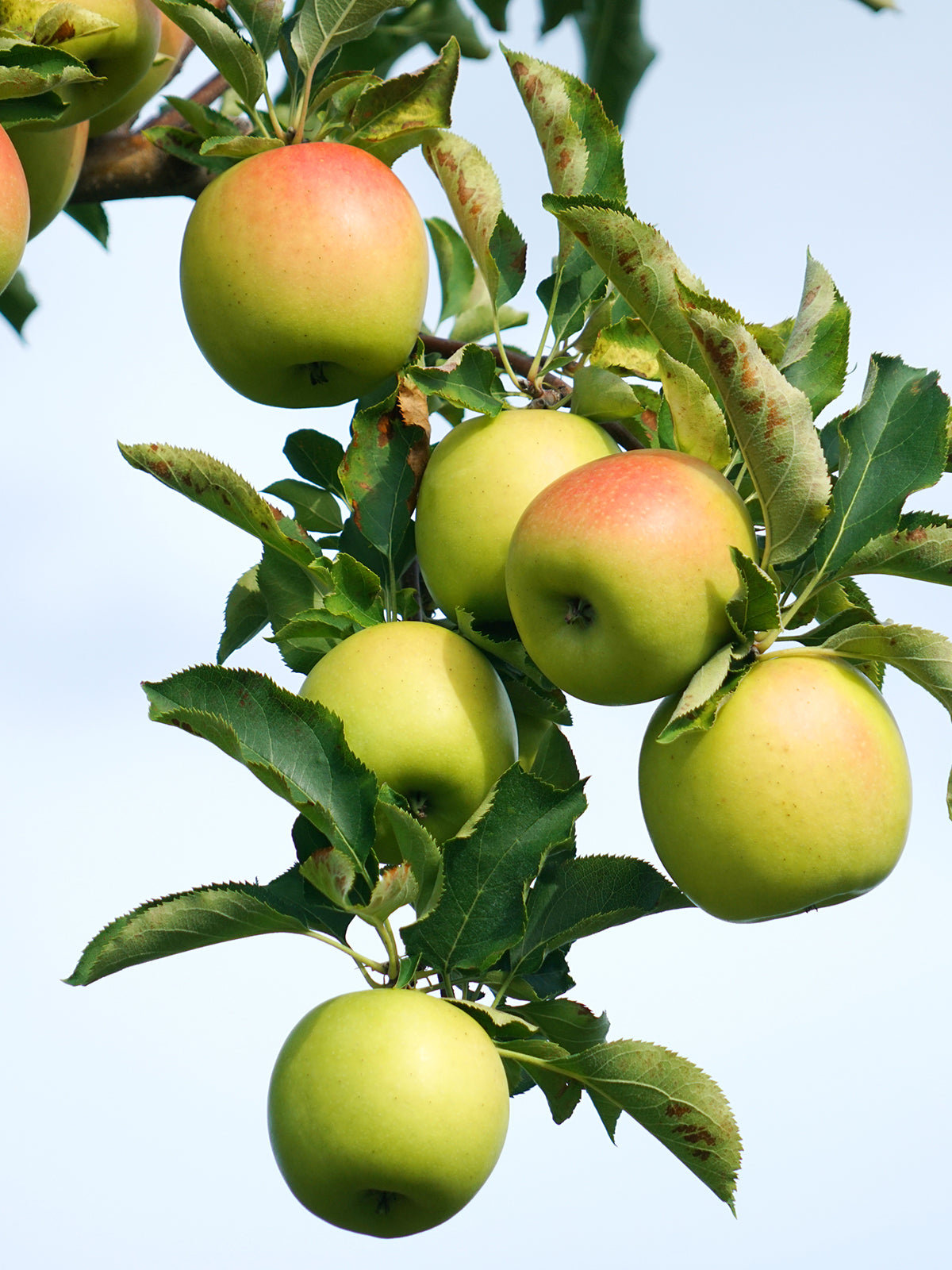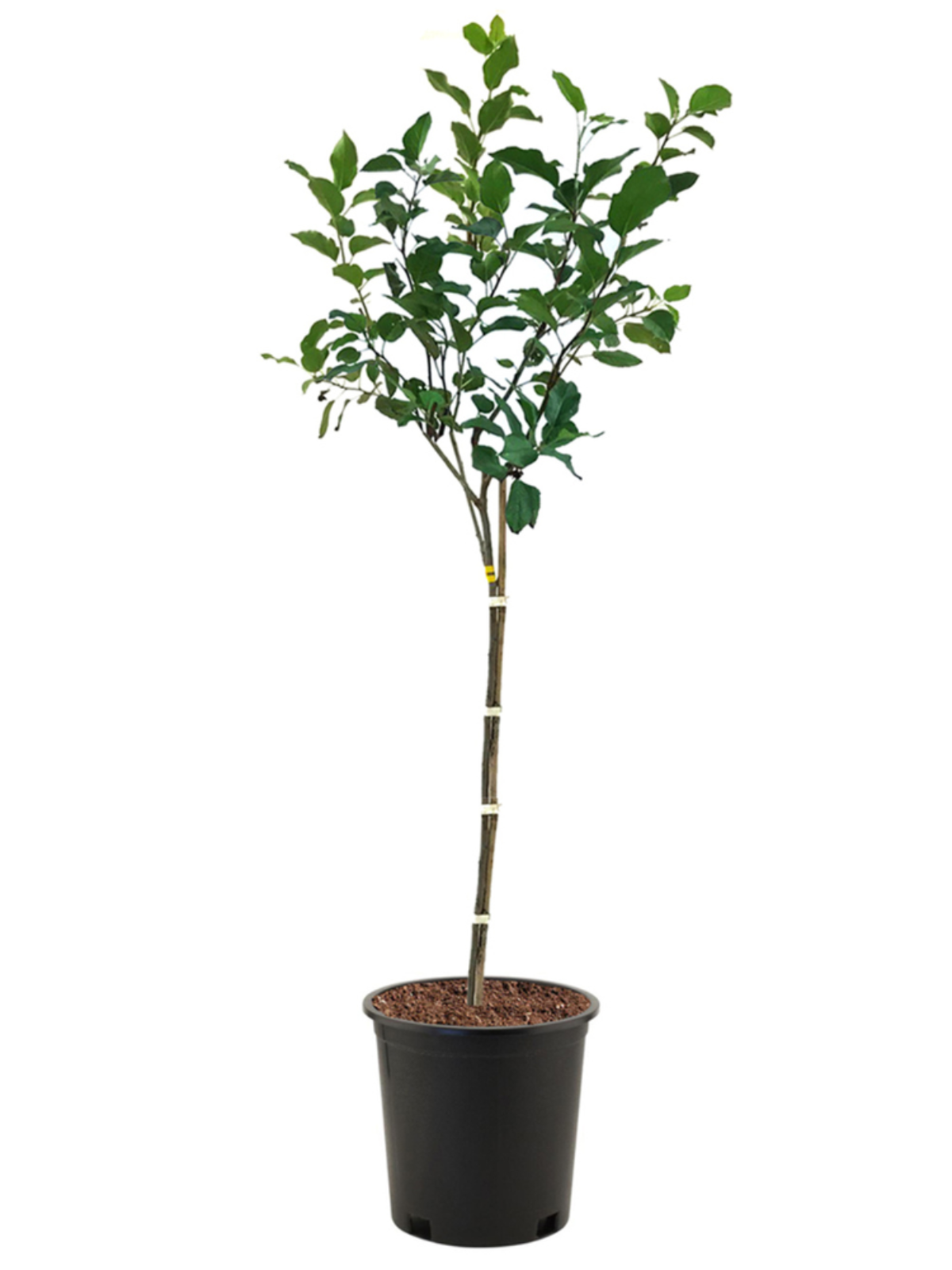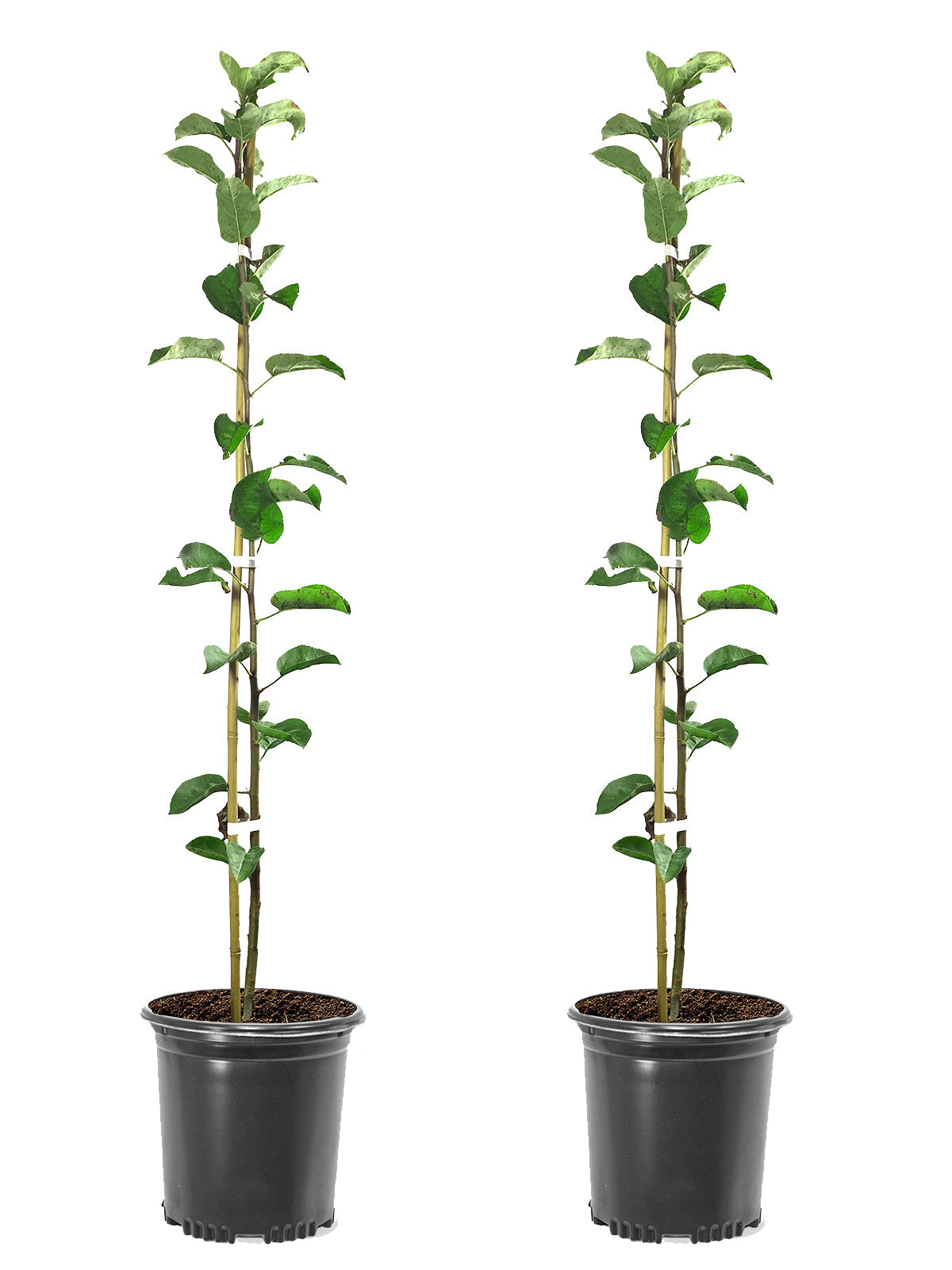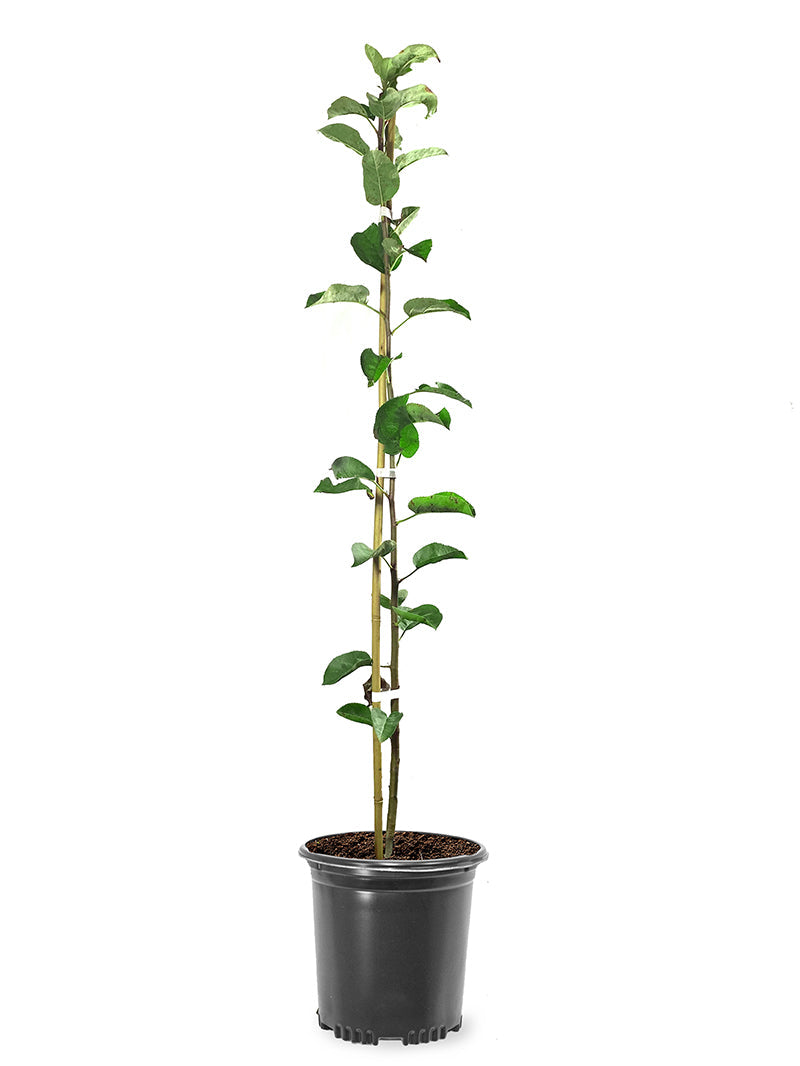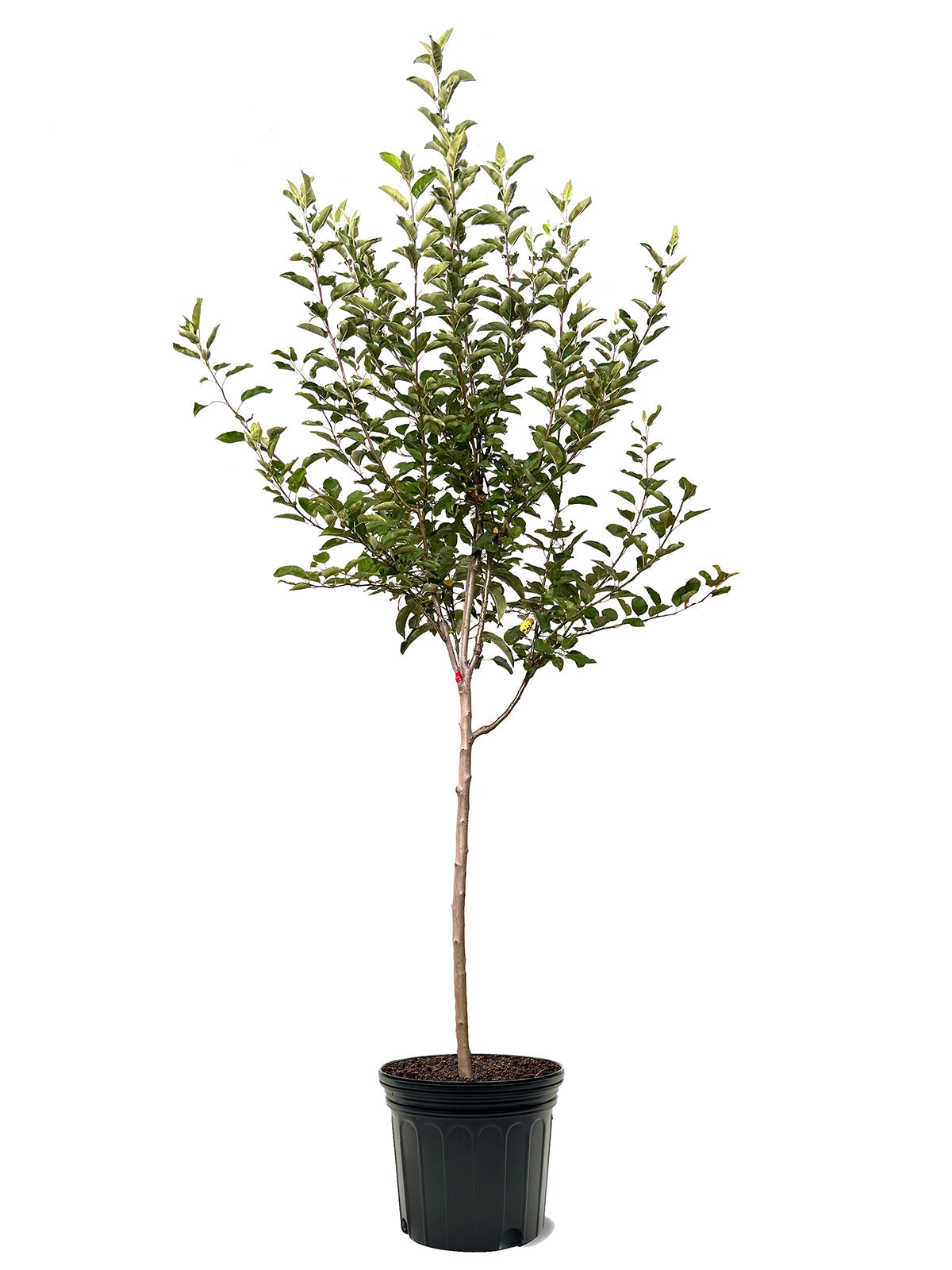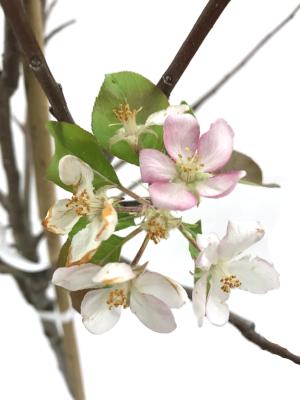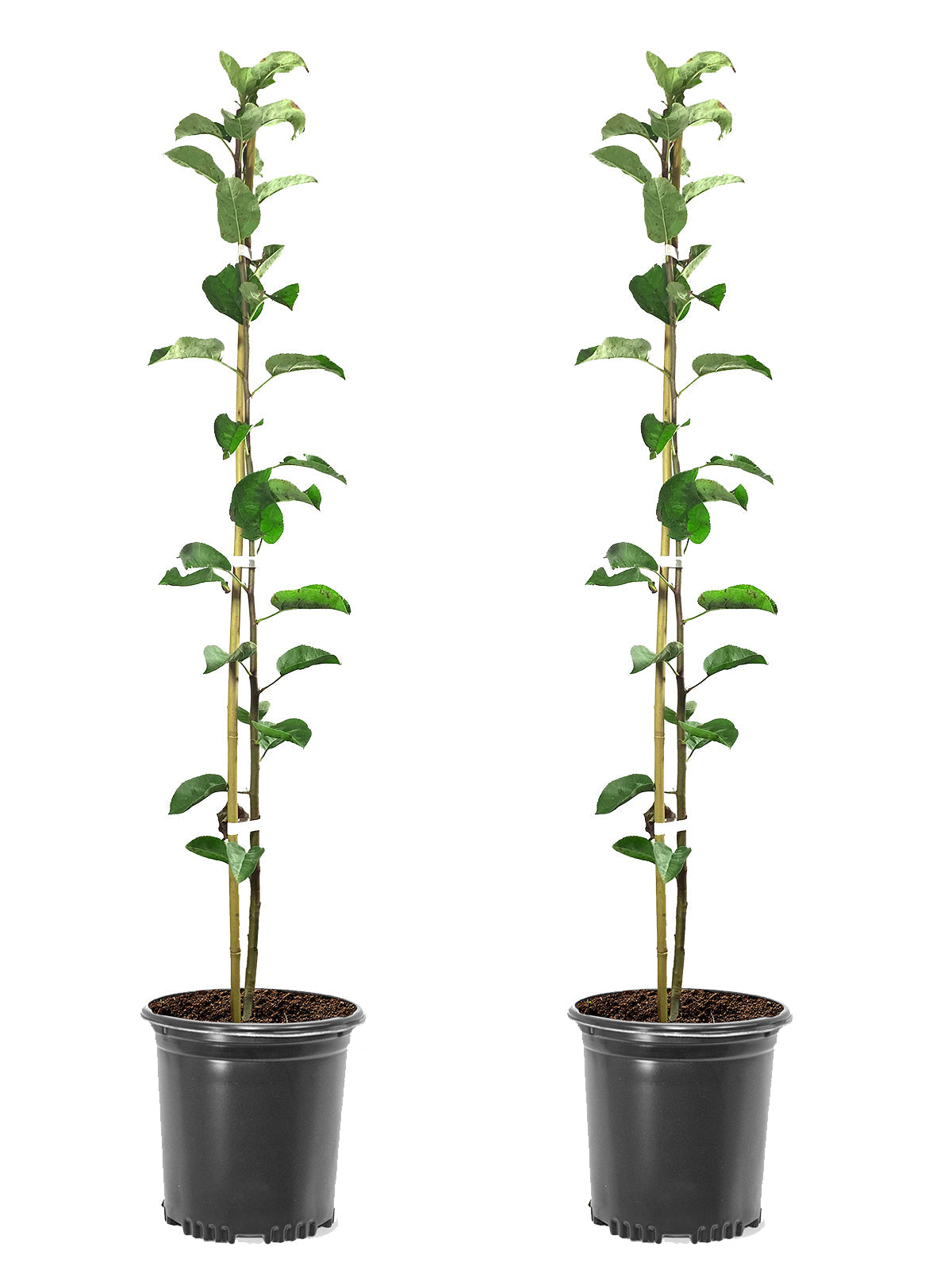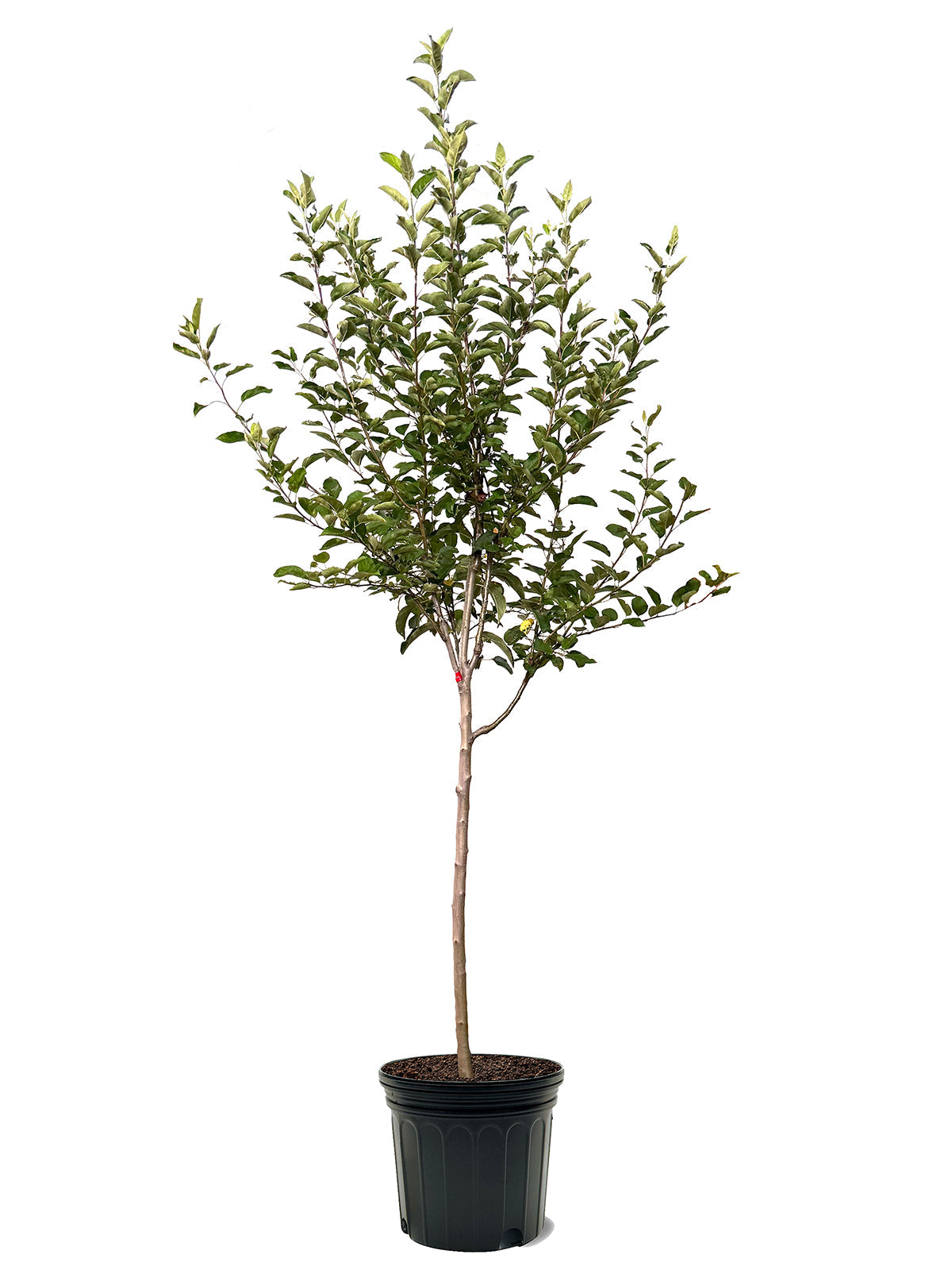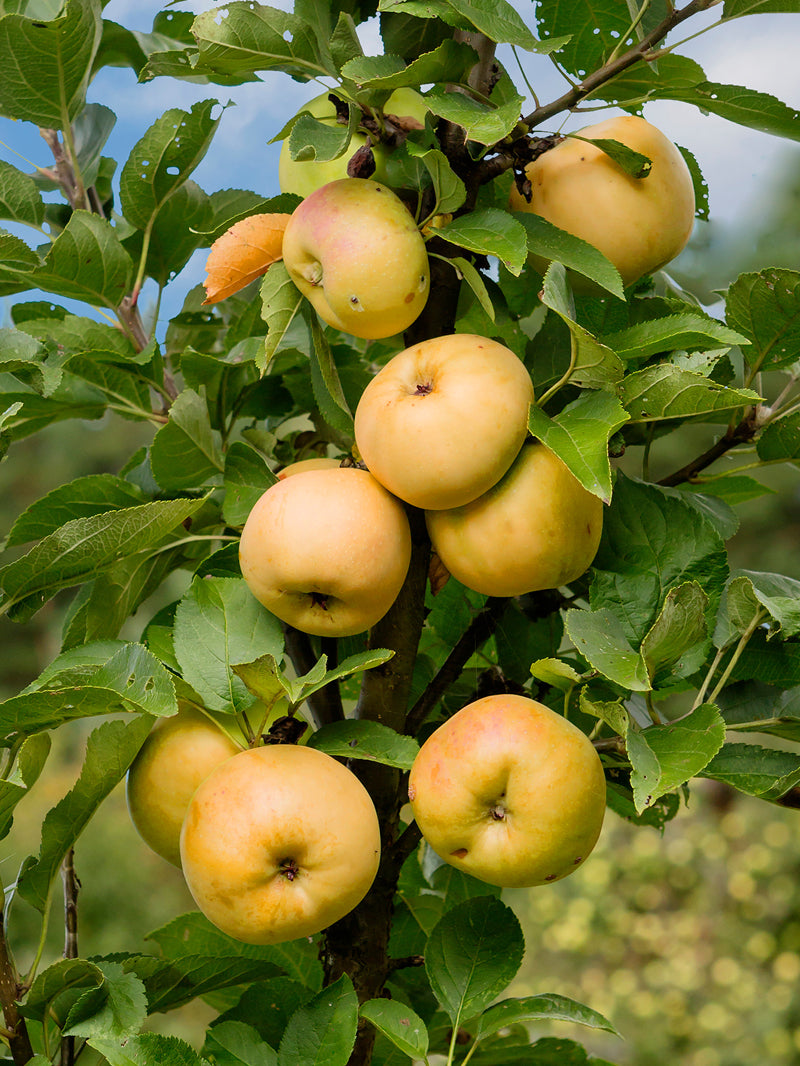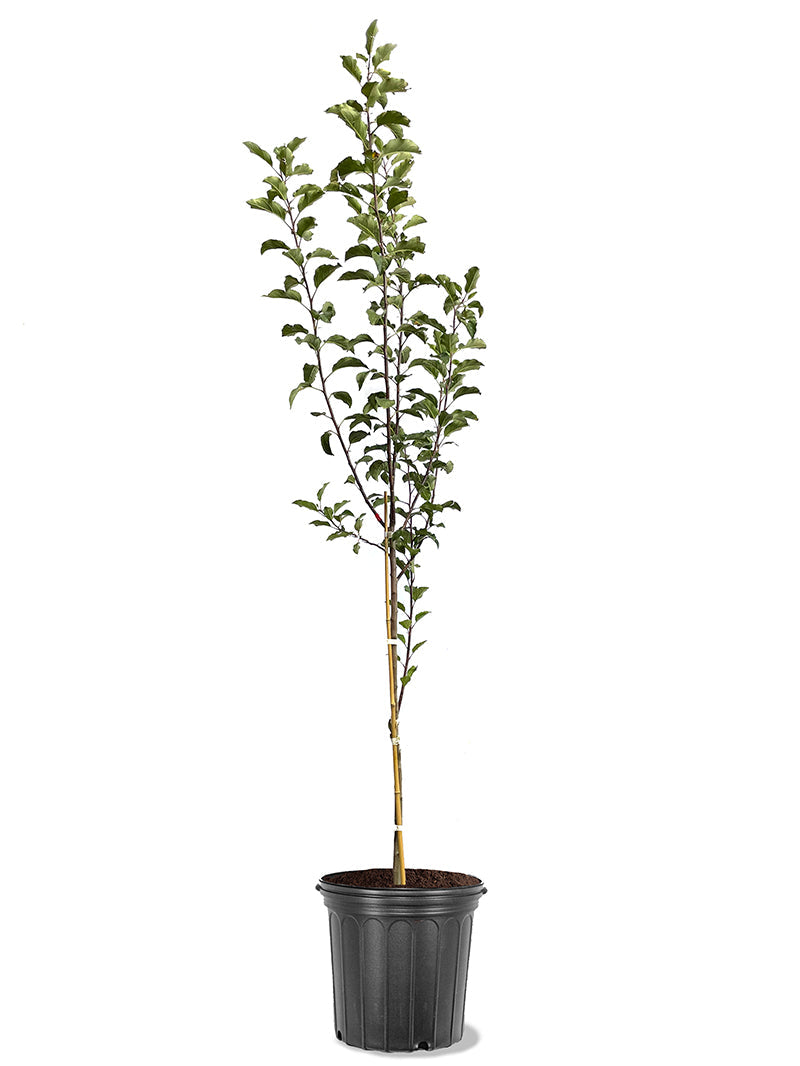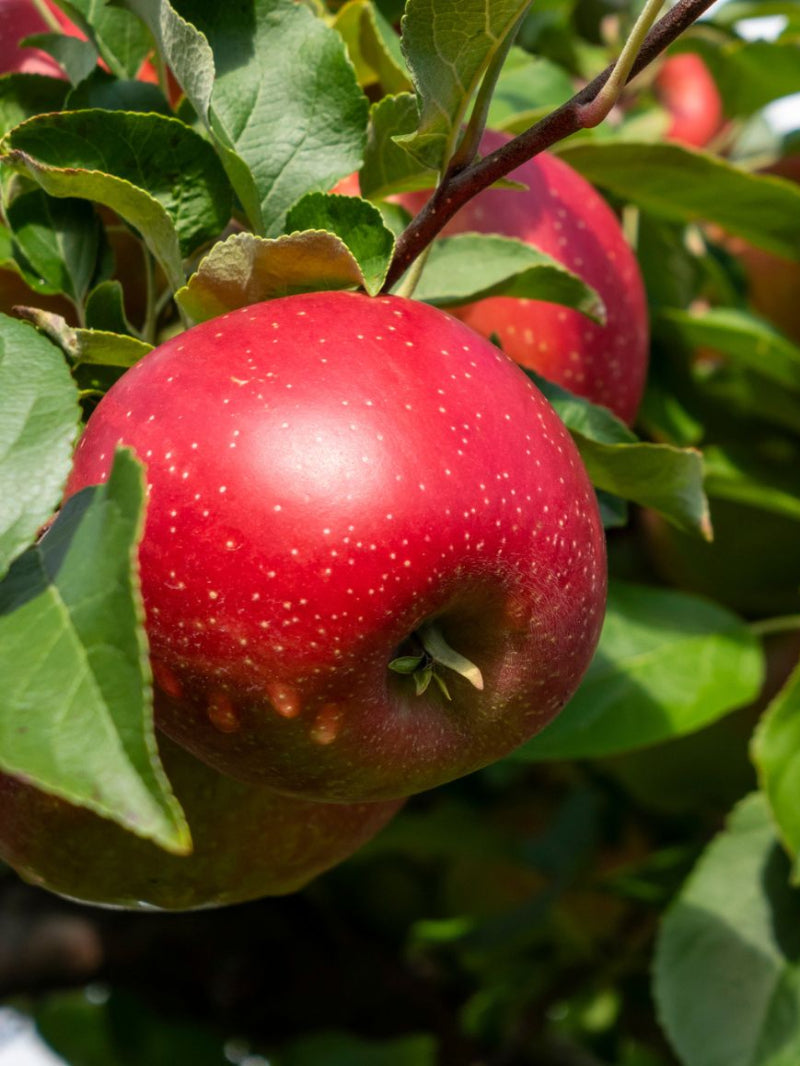
Planning your apple tree site
First you will need to find a place that is well-drained; sandy loam soils are best. It is also very important to keep your trees in full sunlight as this will allow them to grow vigorously, and ultimately, produce the best fruit. Be careful to avoid frost pockets when planting as these will damage your fruit.
Apple trees require a cross-pollinator and a certain amount of chill hours to produce fruit. If your tree does not get either of these elements it will fail to produce an edible crop. Please refer to each apple tree product for pollination and chill hour requirements specific for that variety.
Depending on the landscape, and what your uses may be for your apple trees, try spacing them 15-20 feet apart. No more than 20 feet to ensure the trees cross pollinate.
Soil Prep for Your Apple Tree
It’s time to start digging! First, you will need to dig a hole three times the width of the size of the pot, and just as deep as the root ball. The dirt that you have taken out of the hole should be well mixed 50/50 with aged mushrooms compost, rotten pine bark, aged manure or compost.
When you remove the plant from the pot, be careful not to hurt the root ball, and gently place it into to your fresh dug hole. To avoid burying to deep, make sure your plant is positioned with the top most roots at the soil line. Once your tree has been placed in the hole, start filling it in with the 50/50 mix, and push lightly to pack it in.
Your apple tree should be watered thoroughly for the roots to settle and to eliminate air pockets. The best soil for apple trees is slightly acidic (pH 6.0-6.8). A good way to find out the acidity of your soil would be to take a sample to the Cooperative Extension agent near you, for testing. You can also buy an at-home kit at most garden centers. Fertilizer should only be applied at correct times of the year. DO NOT PUT FERTILIZER IN PLANTING HOLE!
To protect your tree, please provide a 4 foot diameter weed and grass-free area. This will provide a water basin and minimize anything from taking water and nutrients from the tree. During spring and summer, 4-6 inches of mulch should be placed a few inches away from the trunk to provide good air circulation. The best mixture of mulch during spring is weed- free hay and compost. During summer time try a mixture of grass clipping, and weed- free hay. If appropriate, add some pine bark or pine needles for acidity.
Fertilizer for Apple Trees
No matter what type of fertilizer you choose (chemical or organic) make sure that it contains iron, zinc, magnesium, molybdenum, copper and boron. While these minor details may seem unimportant to you, your apple tree's growth and production depends on it.
Be sure to evenly spread fertilizer under the entire canopy of your tree, avoiding a 5 inch area closest to the trunk. After fertilizing, be sure to water your tree. Depending on the age of your plant, application of the fertilizer should be adjusted.
WHEN TO FERTILIZE APPLE TREES:
In USDA Zones 8-10: Fertilize 3x a year— in late February, late May and late July/early August.
In USDA Zones 6-7: Further north, fertilize 1x a year in March or after the buds break.
ALL USDA Zones: NEVER fertilize after August as this will start new growth too late in the year and lead to frost damage.
|
10-10-10 or 10-0-10 with minerals |
1 cup for each year of tree’s life -Max out at 9 cups for mature tree |
|
Espoma Citrus Tone (Organic) |
6 cups for 1 year old 10 cups for 2 year old (4-6ft) 18 cups for 7-9ft tree 24 cups for tree over 9ft |
Water For Apple Tree
During the first year, the tree is considered newly established, meaning it is very critical for your plant to be watered. On light/sandy soil water 2x a week, but on clay soil 1x a week will do. When watering your tree be sure to soak the root system entirely. Whether you have a sophisticated automatic irrigation system, or are just using a watering can or bucket, it is better to water periodically and allow the soil to dry out a bit between waterings. Fruit trees do not expect to be growing in perpetually wet soil. Over-watering can be just as harmful as lack of watering. Always take rain water into account before deciding to water your tree by hand/irrigation.
Once the tree is established, it should receive at least one inch of water each week. After the first year you don't need to be quite as vigilant as the tree will have established its root system. As a rule of thumb the period when fruit trees need most water is just before, during, and just after the blossom period (about 6 weeks in total) and in the period leading up to the harvest. Water regularly, especially during dry spells. Lack of rain/water can cause fruit to prematurely drop if not well irrigated during the dry spell.
Pruning Apple Trees
A very important part of an apple tree's health and maintenance is pruning it properly. To create the strongest and healthiest tree, it should be pruned to an open center habit. At the time of planting, select 2-4 scaffold branches spaced equally around the trunk and clip the other branches flush with the trunk. During the second dormant season, top the scaffold branches 36 inches away from the trunk to encourage secondary branching. The tree must have good air circulation in the interior. Pruning should continue for the next five years to train the tree to grow upward and outward by thinning out crossing limbs.
Once your tree has reached maturity, it should only be pruned during its dormant season. The branches should be thinned out and cut back long shoots as needed to maintain tree shape. Remove the water sprouts (suckers). If left unpruned the tree will start to get bushy and lack vigor, therefore producing small fruit and inferior quality apples. While pruning, remove any dead, damaged, or diseased branches. Head trees back with mold and hold cuts to maintain height for ease of picking.
Remember that pruning does not hurt the tree, but encourages new growth and creates a stronger, more vigorous specimen to grow quality fruit. Not every tree will be shaped the same and no one person prunes the same way. Also keep in mind, the unpruned tree may not be fruitful or grow well at all.
Apple trees are productive and strong when pruned and trained to a central leader (or main leader) structure. This type of structure has a pyramidal shape with a single upright leader limb as its highest point. This central leader is the newest extension of a long, upright growing trunk from which all lateral branches arise.
As with all strong-growing branches, the leader should be headed (pruned back) at approximately 24- to 30-inches above the highest set of its surrounding “scaffold” branches. The uppermost remaining bud on the leader will then produce a vigorous new leader, and no other shoot should be allowed to grow taller.
Lateral limbs should be selected from shoots growing out from the central leader. These should be spaced vertically about 4- to 6-inches apart. They should also have growth that is more horizontal than vertical, and point in different compass directions from the trunk – thus creating a “scaffold” of branches. Any unbranched lateral branches should be headed back to the next ideal bud to encourage side branches and to stiffen long, lateral branches. All laterals should exhibit the stronger wide angles discussed above.
Shop our collection of apple trees and have them shipped right to your door!

